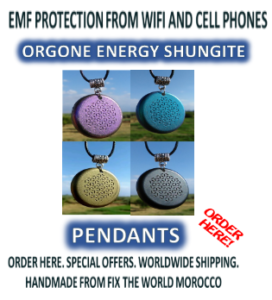
Republished with permission from the Organic Daily Post
Table of Contents
Essential oils are oils extracted from various plants. They contain compounds which are present in the plants but in a highly concentrated form.
For example, herbs like basil and rosemary contain compounds that are very good for us. We flavor our foods with them for their taste but also because they are good for us.
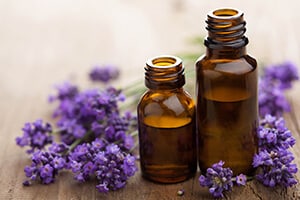
They contain vitamins, minerals and other compounds that help us stay healthy. Essential oils made from these herbs contain those same healthy elements.
However, because they are so concentrated, we get the same benefits from 1 or 2 drops, as opposed to several tablespoons of plant material.
How Essential Oils are Produced
Essential oils are produced in a few different ways. The method of extraction depends on the plant and also what the oil will be used for.
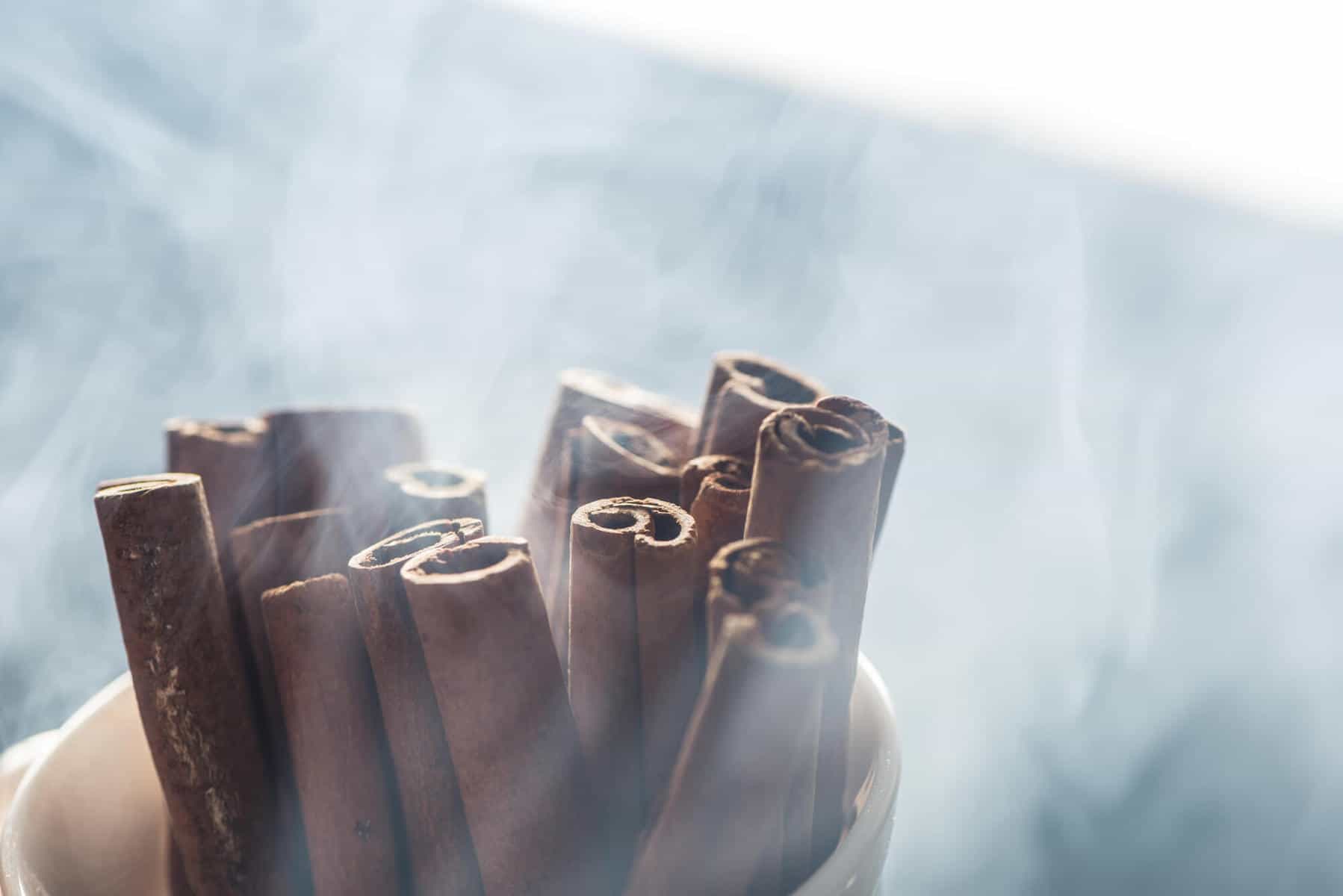
Steam distillation is most commonly used to get essential oils from herbaceous plants like herbs and mints. It is also often used to get the essential oil from citrus sources and wood sources like rosewood.
Some types of oil, like copaiba balsam and Frankincense, are steam distilled from tree resin. During the steam distillation process, the plant essences are turned into vapor then the oil condenses and is collected as the vapor evaporates.
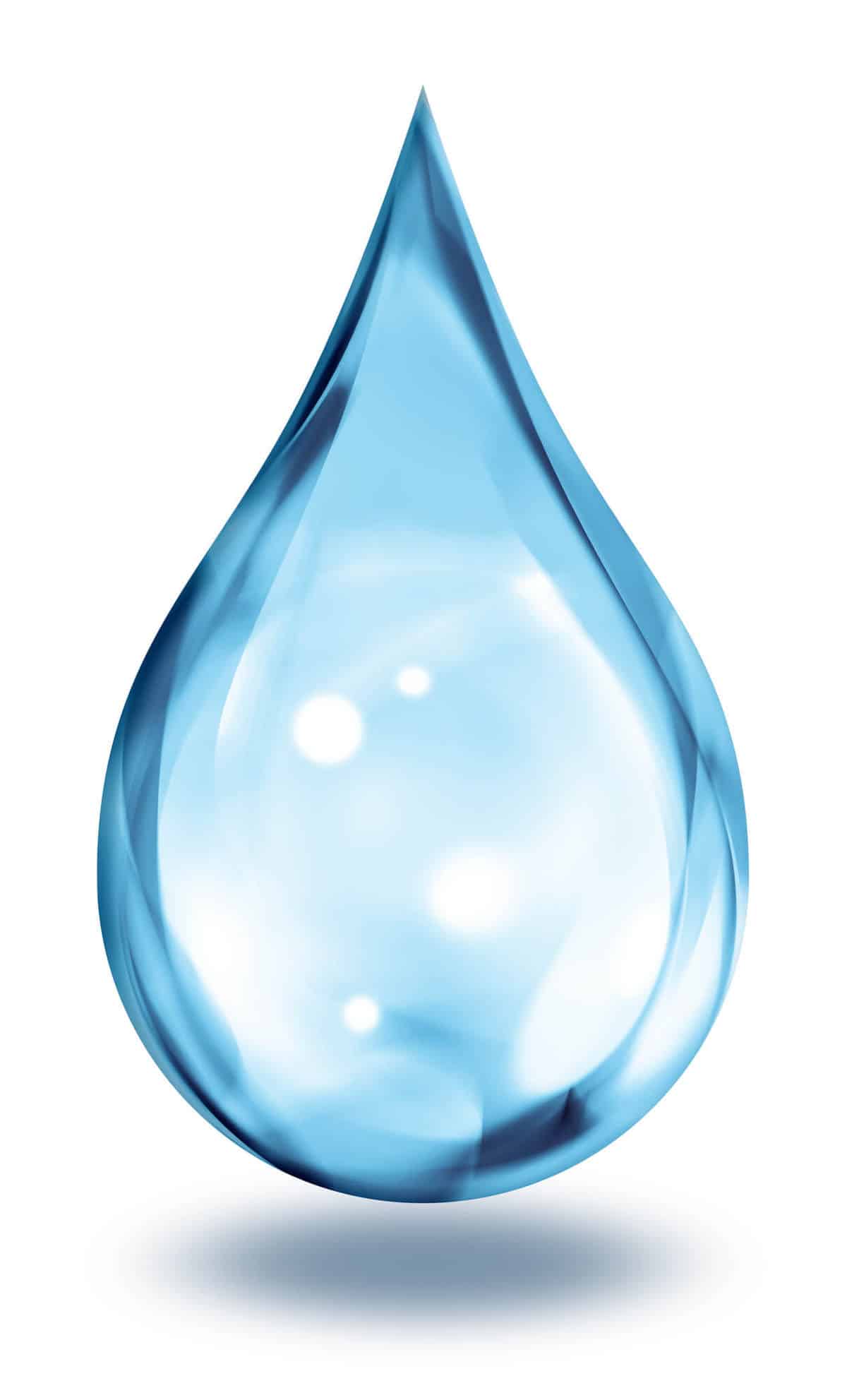
There are also distillation processes known as water distillation, hydro diffusion, combination water/steam distillation, fractional distillation, cohobation and rectification.
Discovery Channel video on how lavender essential oil is produced:
Some oils, like jasmine, are steam distilled or solvent extracted from something called an “absolute,” which is an even more concentrated form of the oil. The absolute, a waxy substance also known as “concrete,” is extracted from the flowers with solvents.
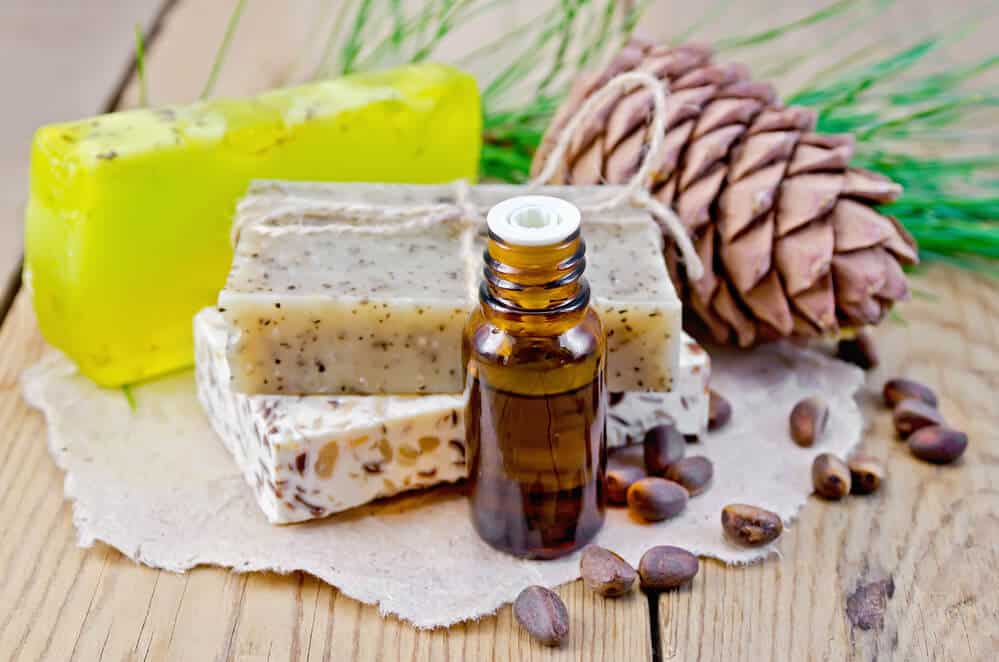
They are much too fragile to be processed with regular steam distillation or expression. Solvents used in this process are usually either ethanol, hexane, petroleum ether or methanol.
Jasmine oil producers get several “grades” of oil using this process which are used for a variety of purposes, like perfumery and regular essential oil.
Essential Oil Categorization
Essential oils are categorized in a variety of ways. Knowing which part of a plant is used to make an essential oil and how its aroma is categorized can help you understand its fragrance and how best to use it.
Plant Parts Used:
- Bark oils made from the bark of trees like rosewood, cassia and cinnamon can be a bit more expensive.
- Berry oils like juniper berry and May Chang or Litsea cubeba are made from the berries of the plants and sometimes the twigs and leaves. Oils like juniper berry, which are made with only the berries, rather than leaves, twigs and berries, are generally higher quality. Black pepper and allspice essential oils are berry oils.
- Citrus oils are most often made from the rind or peel of the fruits, although not always. Bergamot , orange, grapefruit, tangerine and yuzu are citrus oils made from the fruit rinds.
- Flowering herb essential oil is usually distilled from the flowering tops of the plants. Clary sage, lavender, peppermint, rosemary and thyme oils are all in this group.
- Flower only essential oils tend to be more expensive because they are more difficult to make. Chamomile, helichrysum, jasmine and ylang ylang are made from the flowers. Neroli oil is a citrus oil that is made from orange blossoms.
- Grass essential oils are made from the grass blades or leaves. Citronella, lemongrass and palmarosa are essential oils made from grass-type plants.
- Leaf essential oils are often fairly inexpensive. The distillation process is less expensive and the leaves are a constantly self-renewing resource. Geranium, patchouli, tea tree and violet oils are made with the leaves of the plant. There is a cinnamon essential oil that is made from the leaves of the tree, too.
- Moss or lichen can be used to make essential oil. Oakmoss absolute is commonly used to infuse perfumes with an earthy fragrance and it is an effective fixative used to stabilize scents.
- Needles from the trees are used to make cypress, fir, pine and spruce essential oils.
- Resin or gum from certain trees is used to make essential oils. Frankincense, Peru balsam and myrrh are all oils made from steam distillation of the resin or gum of the tree.
- Roots are used to make essential oils from angelica root, ginger root, spikenard and vetiver.
- Seeds can be steam distilled or cold pressed to make essential oils like carrot seed, coffee bean, coriander, cardamom, cucumber seed, dill and fennel.
Fragrance Categories
Essential oils are categorized for perfumery by fragrance note and aroma family.
- Essential oils are categorized as “Top,” “Middle,” or “Bottom” note. Top note essential oil fragrances dissipate more quickly. Middle note fragrances linger a bit longer and bottom notes last the longest.
- Aroma family categories describe the fragrance. The most common aroma family categories are Citrus, Floral, Herbaceous, Camphoraceous, Minty, Oriental, Resinous, Spicy, Earthy or Woody.
The fragrance note and family are not always perfectly clear cut. For example, an essential oil can be categorized as “Middle to Bottom Note,” meaning it can linger a bit longer than your standard “Middle Note” oil.
The aroma family can be a combination of scents, like Herbaceous/Earthy/Spicy or Herbaceous/Floral.
How Essential Oils are Used
Essential oils are used in aromatherapy, applied topically or ingested. Aromatherapy is the most common way to use essential oils.
Almost all of them can be added to a diffuser, although there are a few that are rarely used this way because people usually don’t like how they smell. With most oils, it is okay to add 4 to 5 drops to the diffuser, but this varies.
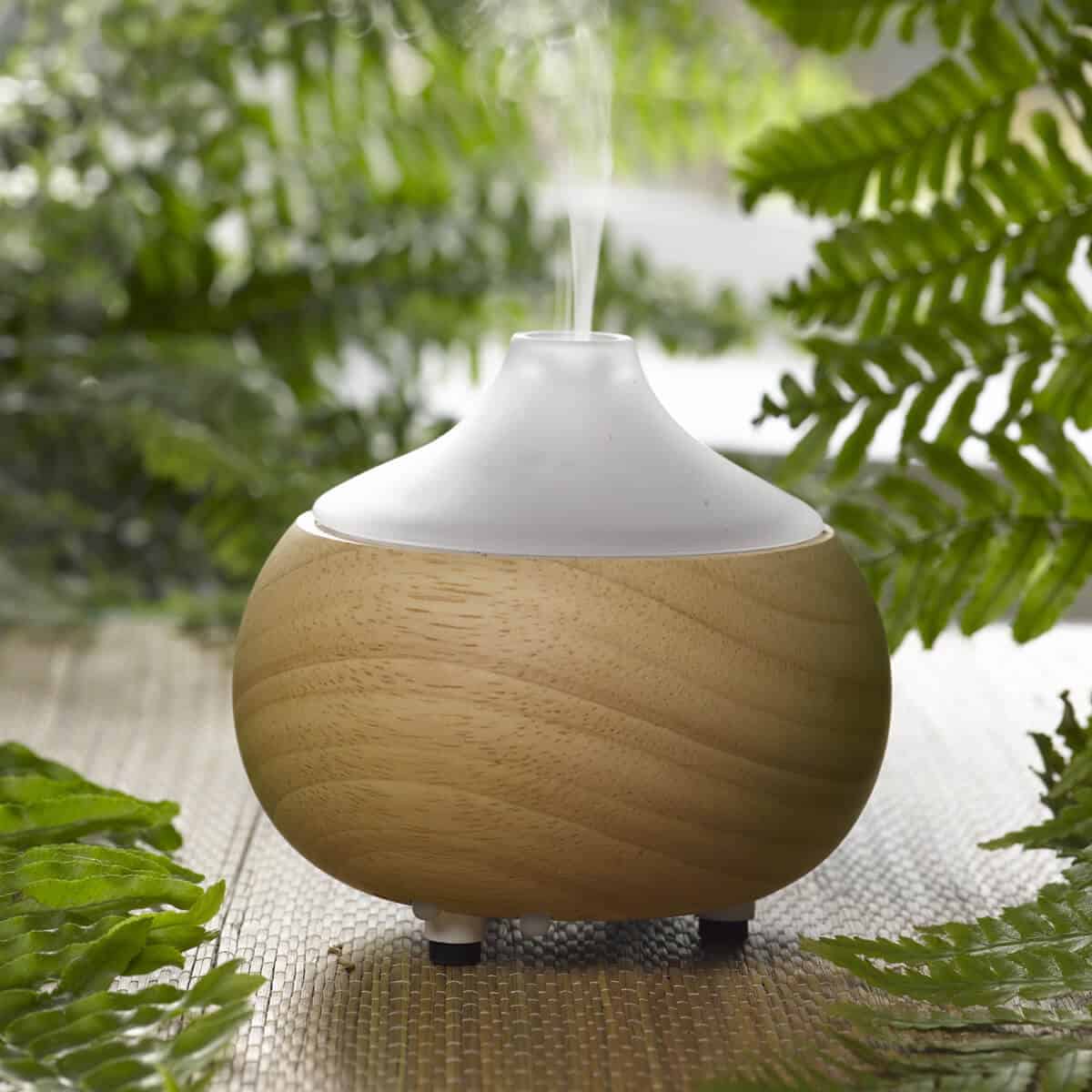
You need to do a bit of research on your oils to find out how many drops should be used. When using a diffuser, you really should only run it for up to 60 minutes at a time. Some diffusers have an “intermittent” setting, which means the vapors are released intermittently.
They can be left running for longer periods because they aren’t putting out a constant stream of the oil’s medicinal properties. Remember, you are diffusing medicinal properties into the air, not just air freshener.
Nearly all essential oils can be used topically after diluting them in a carrier oil. Many essential oils can be ingested. However, it is rarely recommended because they are extremely strong and people take too much. They are also not often processed for internal use and could contain impurities that you really wouldn’t want to ingest.
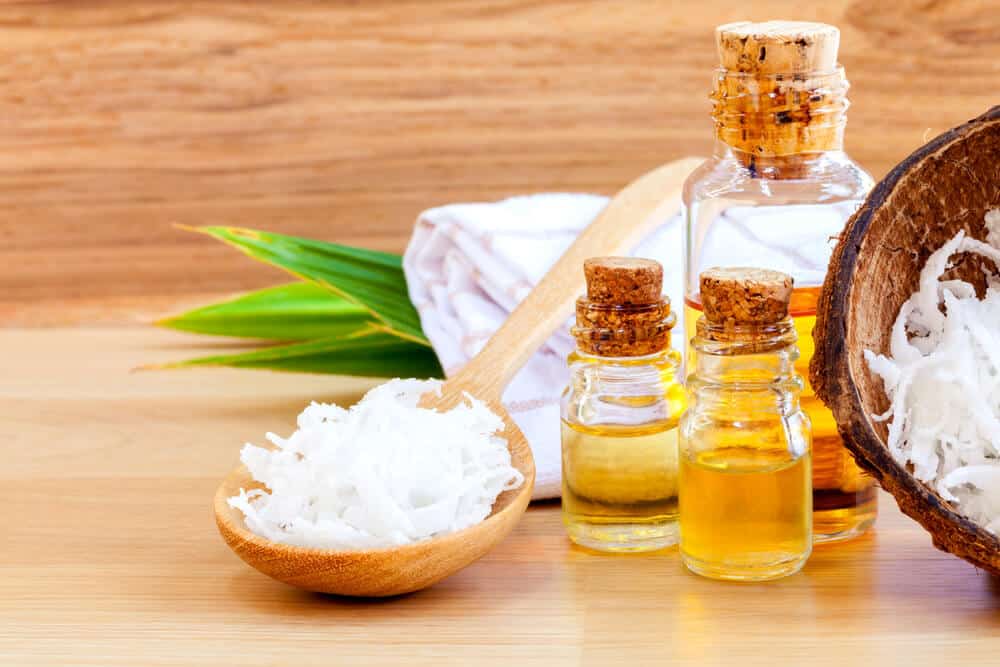
If you do want to ingest an essential oil, purchase one that is sold as “food grade.” There is very rarely any need to ingest an essential oil, though. Their medicinal properties and benefits are readily absorbed into the body through the sinuses, throat and lungs in aromatherapy and through the skin when applied topically.
Essential oils are also used to clean, well, just about anything. They can be used to clean and disinfect hard surfaces in the home, laundry, furniture, clothing, shoes and pretty much anything else you can think of.

They can be used to clean your body and wash your hair, too. Many essential oils are recommended for skin and hair health. They can be used by simply adding a few drops to a body wash or shampoo.
How to make 7 DIY home cleaning products with essential oils:
Selecting Essential Oils
As with any popular commodity, there are many essential oils from which to choose and sellers from which to buy. As you are shopping, keep in mind that there are bad, mediocre and excellent, high-quality oils on the market.

In general, the old adage “you get what you pay for” applies. Cheaper oils may have been on the shelves for a long time and could have lost some of their efficacy. They may smell a bit “off.” Cheaper oils could also just be from a low-quality batch sold by the producer at a cut rate.
Some sellers will mix an essential oil with a carrier oil then sell it as a pure essential oil. They may be okay to use, but you will have to use more in order to achieve the desired results and they might not have the beautiful, rich, true aroma that a good quality oil does.
Important Note: Whatever you choose for an oil, make sure that the oils you purchase are high quality. Remember, you’re breathing this oil into your lungs so essential oil quality is a terrible place to cut corners.
Check the botanical name of the plant used to make the essential oil to make sure you are getting what you want. There are quite a few oils that are made from different but similar plants and sold under the same name. For instance, Chamomile can be Roman Chamomile (Anthemis nobilis) or German Chamomile (Matricaria chamomilla).
They are very similar but have some slight differences. There are different types of lavender, too, but this has more to do with where the lavender was grown and at what elevation. It makes a difference in the strength and fragrance of the oil. You may have to try a couple different types to decide which you prefer.
Organic is always better, though the benefit can be very minor. When an essential oil is produced, you get whatever is in the plant part that is being distilled or cold pressed.
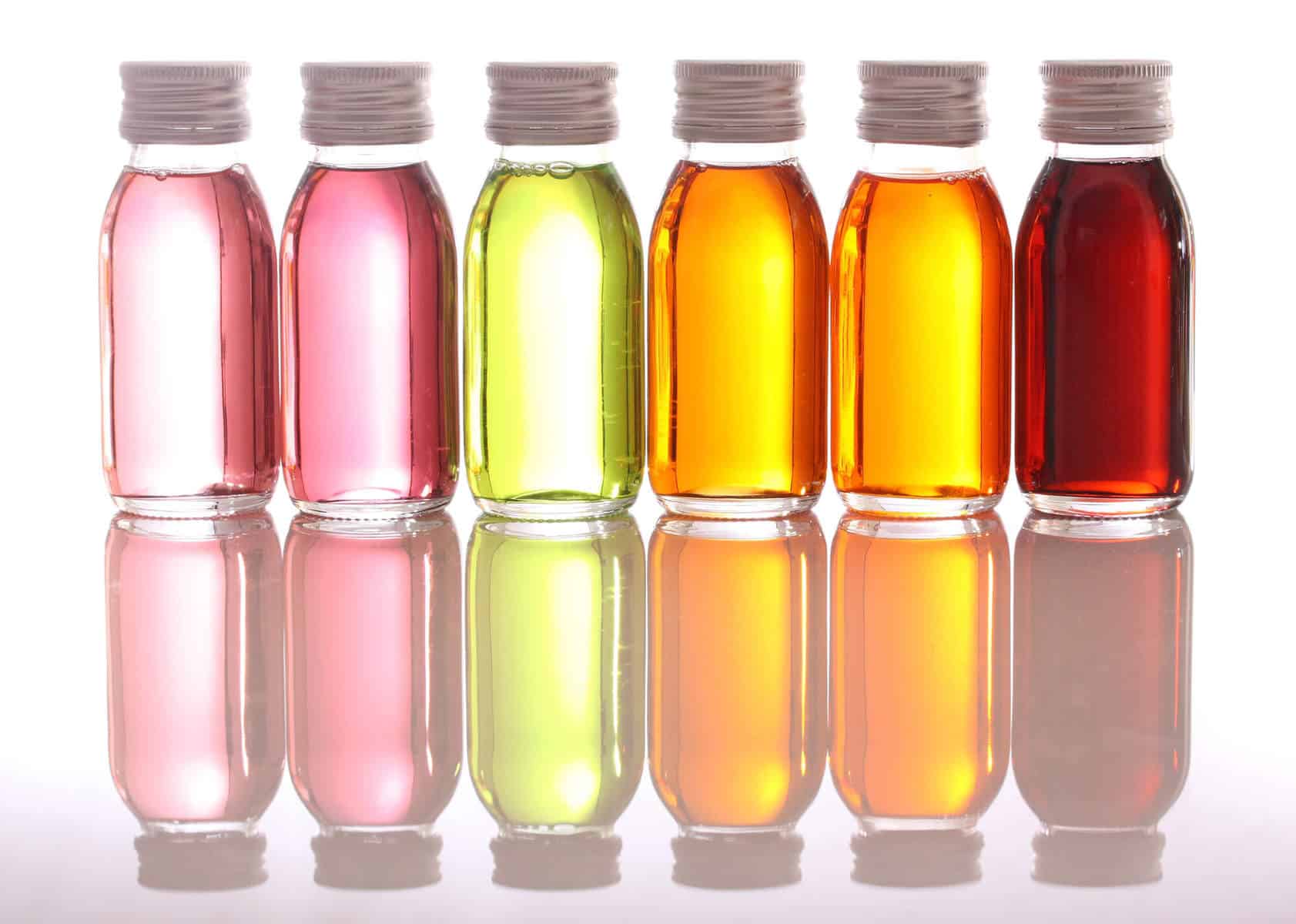
20 Point Checklist for
Identifying High Quality
Essential Oils
Get instant access to a FREE report that shows:
- The telltale signs of poor quality essential oils
- How and where to find the highest quality oils
If the plants have been sprayed with pesticides, there will likely be pesticide residue in the oil. There are many essential oil companies out there that use strictly organic-grown ingredients.
That said, you typically only use a few drops of essential oil applied to larger quantities of carrier oil and pesticides are likely present in trace amounts to begin with. The pesticide residue in your diffuser would thus be infintessimally small, so use your own judgment depending on how you use the oils and the cost differential.
Carrier Oils
The carrier oil you use can be as important as the type of essential oil you use. They all have some therapeutic benefits of their own. For example, jojoba (pronounced ho-ho-ba) helps regulate the skin’s production of sebum, the oily residue that causes acne. It will keep the skin from producing too much sebum and supply more where needed, like on more mature skin that no longer produces enough sebum naturally.
Argan oil is a bit lighter than jojoba and has some great therapeutic benefits for skin, too. It contains Vitamins A and E, curbs the excessive production of sebum and acts as a great conditioner for hair and nails. Coconut oil is loaded with beneficial properties. It has lots of uses on its own, too, from face wash to toothpaste.
Also, unrefined is better than refined — usually. Unrefined carrier oils contain more of their natural properties; however, they have a shorter shelf life. Unrefined oil also tends to have a stronger odor than refined oil.
This is something to seriously consider when you are blending essential oils for fragrance. You don’t want to add a lovely citrus/floral blend of essential oils to a carrier oil with a strong, pungent odor, unless you like the pungent odor.
Blending Essential Oils
There are some basic guidelines to follow when blending essential oils, but much of this process is about personal taste and what you want from the oil blend.
For instance, if you want an essential oil blend that smells good and helps relieve the pain and inflammation of your arthritis, you will want to do a bit of research. Pull a list of oils together that are used to treat arthritis then decide which fragrance you prefer. There are many essential oils with similar therapeutic properties. It will really come down to which fragrance makes you happy.
The Top Note is the first aroma your olfactory system will pick up when you smell the blend. The Middle Note or “Body” will be the second aroma and will last noticeably longer than the Top Note. The Base Note may be barely perceptible at first, but it will last the longest. It is also referred to as the “Fixative” in a blend.
An essential oil’s “aroma family” will also help you decide which oils to use in your blend. Families can be mixed, according to your personal fragrance preference. For example, you can put together a blend of citrus Top Note, citrus/floral Middle Note and floral Bottom Note, if you like floral/citrus fragrances.
For this particular blend you could use Neroli (Citrus aurantium var. amara) for the floral Base Note, May Chang (Litsea cubeba) for your citrus Middle Note and Petitgrain (Citrus aurantium) for the citrus/floral/woody Top Note. T
he result will be an essential oil blend that starts at citrus/floral then gently fades to floral.
This blend would be good for softening skin, reducing inflammation, treating fungal infections, alleviating depression, firming/toning skin and muscle, lowering blood pressure, calming nervousness or anxiety and stopping muscle spasms.
Always use an appropriate carrier oil, based on the blend’s intended use. The best dilution rate in general is 1% to 2%, which is 1 to 2 drops per teaspoon of carrier oil.
When blending multiple essential oils, all of the essential oils in the blend should have a combined total of 2%. So, if you want to put together three different essential oils, use 2 drops of each essential oil with 1 tablespoon (3 teaspoons) of carrier oil.
Some oils can be used at a stronger dilution rate, even up to 25%, but only when truly necessary and for no more than two weeks. A stronger blend may be useful for a sprained ankle or a particularly painful gout or arthritis flare-up.
Keep in mind that most essential oil companies sell blends. Unless you really just want to come up with your own personal fragrance blend, you may want to simply buy a blend that was created by the experts who know what works well together.
Essential Oil Blend Recipes
There are many excellent blend recipes for everything from vapor rubs to treatments for fungal infections or just getting a good, restful night’s sleep. Following are some good essential oil blend recipes:
- Put some pep in your step with 2 drops each of peppermint EO and lemon EO and 1 drop of Frankincense EO. Add them to your diffuser with 1/4 to 1/2 cup of distilled water and enjoy some stimulating aromatherapy.
- Beat insomnia by blending together 10 drops of Roman chamomile EO and 5 drops each of bergamot EO and clary sage EO and adding a few drops of the blend to a tissue. Slip the tissue under your pillowcase. If you prefer, add 1 drop each of clary sage and bergamot and 2 drops of Roman chamomile to your diffuser with 1/4 cup of distilled water and run the diffuser for 60 minutes before you go to bed.
- Reduce the signs of aging by combining 10 drops of frankincense EO, 1 ounce of aloe vera gel, 1 ounce unrefined shea butter, 1 ounce of unrefined coconut oil and 1/2 teaspoon of vitamin E. Store the combined ingredients in a jar and gently dab it around the eyes at night before bed and in the morning when you first get up.
There are many recipes like these that were put together by experts, but you can always have fun coming up with your own. Just be sure to research the oils, make sure they are safe for the purpose of your blend and use quality ingredients.
Essential Oil Safety
Essential oils contain concentrated forms of therapeutic and medicinal elements. In order to use them safely, it is important to keep this in mind at all times.
They are like the active ingredients in cough syrup or anti-fungal cream that must be diluted properly before use. Following are some basic precautions that should be exercised with all essential oils:
- Always research your essential oils for safety and use recommendations. Some oils are highly sedative or can cause sensitivity to sunlight and may have other side effects. If the experts say an oil is sedative, you should treat it just like you would a cough syrup that makes you drowsy.
- Be especially cautious if you are pregnant or breastfeeding a baby. Many oils are probably safe but, because there hasn’t been enough testing done to be sure, it is best to avoid them during this time.
- Be careful using essential oils on young children and the elderly. Here, again, many are probably safe but, without clinical research, it is best to avoid them. If you do find an essential oil that is safe for children and the elderly, adhere to the dilution rate and usage recommendations.
- Always do a skin test before using a new essential oil, even if you have no reason to think it would cause a reaction. Apply a 1% to 2% strength oil to your arm or leg and wait at least a few hours to make sure you don’t have a reaction before applying it to larger areas.
- Never ingest an essential oil unless it is recommended and is a food-grade oil.
- Consult your physician before using essential oils if you are being treated for an ailment or are on medications. This is especially important if you are on medication for high blood pressure, diabetes or have liver or kidney problems. The medicinal properties of essential oils can change the efficacy of your medications or put undue strain on an already compromised liver or kidneys.
- Do not get essential oils in your eyes, nose or genitals where your mucus membranes will be exposed. At the very least, they will cause uncomfortable dryness. They can also do serious damage, though, especially to the eyes.
- A 1% to 2% dilution strength with most essential oils is safe to use every day. If you need something a bit stronger, for instance if you pulled a muscle or have gout, make the blend stronger gradually. As soon as you hit a dilution rate that works for you, stop there. Never use a stronger rate than 25% and do not use it for more than two weeks at a time. If it doesn’t give you relief, you need to explore different treatment options.
- Store essential oils safely out of the reach of children and pets. If your child drinks any essential oil, have him/her drink whole or 2% milk and contact poison control. If your pet ingests the oil, contact a veterinarian immediately.
- Essential oils are flammable. Keep them away from open flames.
Essential Oils that Irritate Skin
Essential oils that have been known to cause skin irritation should be used cautiously and only at a very low dilution rate.
Following are oils that should be used with caution due to their ability to cause skin irritation:
Following are essential oils that can cause sensitivity over a period of time:
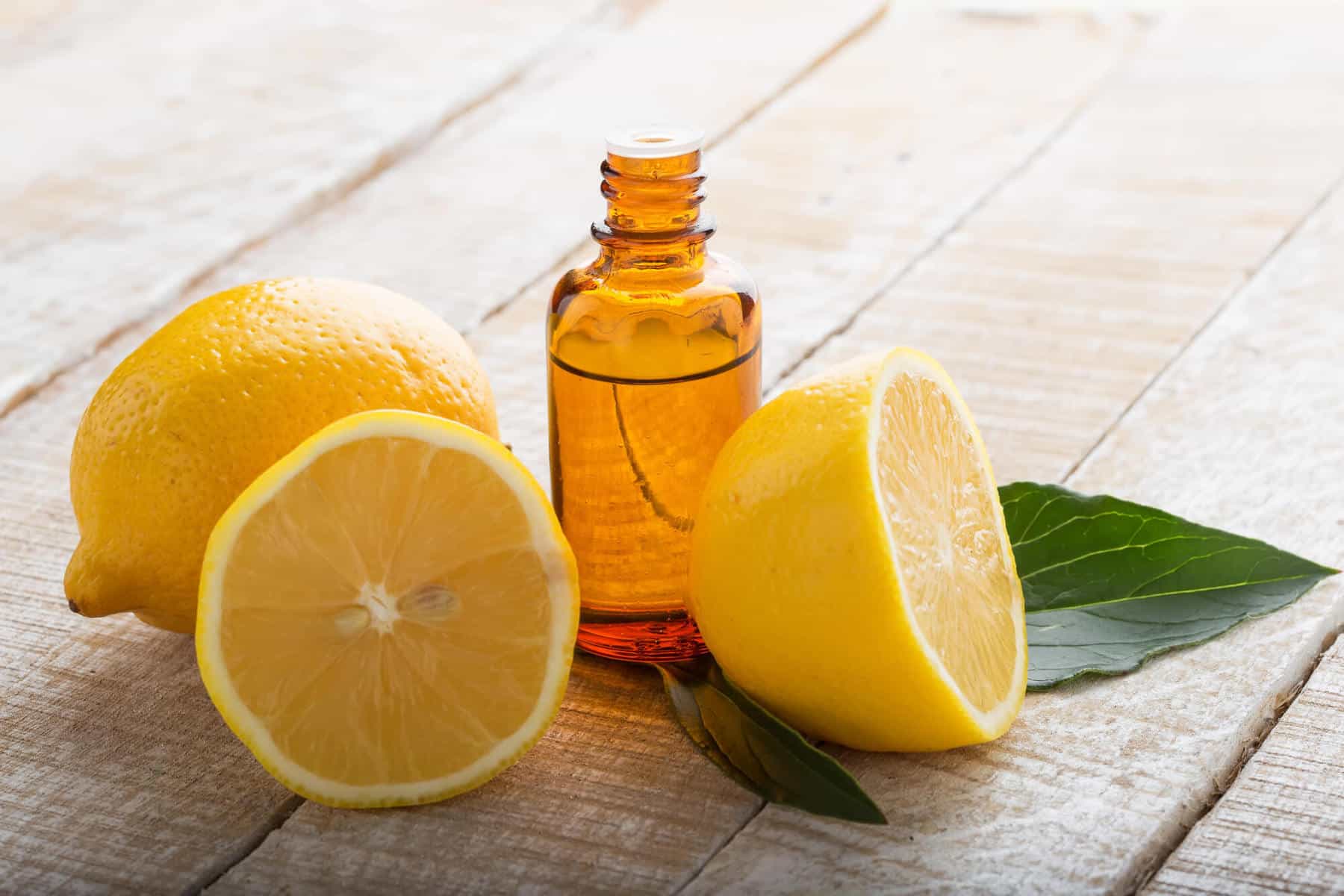
Essential oils that are phototoxic or photosensitizers can be used but do not expose yourself to sunlight for at least six hours after applying the oil to your skin.
The National Association for Holistic Aromatherapy(NAHA) says, “… stay out of the sun or sun tanning booth for at least twenty-four hours after treatment … .” You could experience skin irritation, rash, blisters or even a total loss of skin pigmentation.
Following are oils that are phototoxic:
Citrus oils that are NOT phototoxic:
Be as cautious with essential oils as you would with prescription and over-the-counter medications. They are wonderful, natural solutions to many health issues but, just like any medication, they must be used responsibly.
List of Essential Oils & Their Properties
Below is our master list of all the essential oils that most people would ever use. You can use the selection toggle below to quickly jump to any given oil because the list is long. For each oil you’ll see the basic info, properties and links to more information.
Select Your Essential Oil
Ajowan or Ajwain Seed
| Description | Ajowan seed oil is steam distilled from Trachyspermum seeds and treats digestive disorders, upper respiratory infections, arthritis, headache, impotency and ulcers. |
| Full Article | Coming Soon |
| Methods for Use | Aromatherapy, Topical |
| Botanical Name | Trachyspermum ammi or T. copticum |
| Note | Top note |
| Aroma Family | Herbaceous, Spicy |
| Analgesic |  |
| Anesthetic |  |
| Anthelmintic |  |
| Antibacterial |  |
| Antifungal |  |
| Antihyperlipidemic |  |
| Anti-inflammatory |  |
| Antimicrobial |  |
| Antioxidant |  |
| Anti-platelet |  |
| Antiseptic |  |
| Antispasmodic |  |
| Antitussive |  |
| Anti-ulcer |  |
| Antiviral |  |
| Aphrodisiac |  |
| Bronchodilatory |  |
| Carminative |  |
| Estrogenic |  |
| Expectorant |  |
| Germicidal |  |
| Hepatoprotective |  |
| Hypotensive |  |
| Insecticidal |  |
| Nematicidal |  |
| Spermicidal |  |
| Stimulant |  |
| Resources | NIH |
Bergamot
| Description | Bergamot essential oil can be either cold pressed/expressed or steam distilled from the citrus fruit rind. “FCF” bergamot oil is “Furocoumarin Free,” which means the Bergaptene/Furanocoumrin has been removed. Bergaptene or Furocoumarin is the compound in bergamot oil that causes phototoxicity. Steam distilled and “FCF” bergamot do not cause phototoxicity or hypersensitivity to sunlight. Cold pressed/expressed bergamot is phototoxic. Wait at least six hours before going out in the sunlight if you use cold pressed bergamot. Bergamot oil is commonly used to treat digestive problems, emotional problems, depression, joint pain, muscle pain, skin disorders, bacterial infections and upper respiratory infection. |
| Full Article | 17 Uses of Bergamot Essential Oil |
| Methods for Use | Aromatherapy, Ingestion, Topical |
| Botanical Name | Citrus aurantium or C. bergamia |
| Note | Top note |
| Aroma Family | Citrus |
| Phototoxic | Yes (Cold pressed only) |
| Analgesic |  |
| Antibiotic |  |
| Antidepressant |  |
| Antiseptic |  |
| Antispasmodic |  |
| Cicatrisant |  |
| Deodorant |  |
| Digestive |  |
| Disinfectant |  |
| Febrifuge |  |
| Sedative |  |
| Vermifuge |  |
| Vulnerary |  |
| Resources | NIH |
Black Pepper
| Description | Black pepper essential oil is steam distilled from peppercorns. It is used to treat arthritis, bacterial infections, digestive problems, colds, flu, congestion, edema, poor appetite, muscle spasms and fend off free radicals. |
| Full Article | Coming Soon |
| Methods for Use | Aromatherapy, Ingestion, Topical |
| Botanical Name | Piper nigrum |
| Note | Base to middle note |
| Aroma Family | Spicy |
| Antiarthritic |  |
| Antibacterial |  |
| Antioxidant |  |
| Antirheumatic |  |
| Antispasmodic |  |
| Aperient |  |
| Carminative |  |
| Diaphoretic |  |
| Digestive |  |
| Diuretic |  |
| Resources | NIH |
Blue Tansy
| Description | Blue tansy essential oil is steam distilled from the whole plant. It can be used to treat anxiety, pain, arthritis, allergies, colds, flu, bacterial infections, fungal infections, bronchial congestion, inflammation, skin conditions and indigestion. It can also be used to kill insects. |
| Full Article | 36 Uses of Blue Tansy Essential Oil |
| Methods for Use | Aromatherapy, Topical |
| Botanical Name | Tanacetum annuum (NOT T. vulgare) |
| Note | Middle note |
| Aroma Family | Camphoraceous, Floral, Herbaceous |
| Analgesic |  |
| Anti-allergenic |  |
| Antibacterial |  |
| Antifungal |  |
| Anti-inflammatory |  |
| Antimicrobial |  |
| Antiviral |  |
| Digestive |  |
| Expectorant |  |
| Insecticidal |  |
| Resources | Vogue |
Cardamom
| Description | Cardamom essential oil is steam distilled from the plant’s seeds. It can be used to treat or prevent bacterial infection, improve digestion, stop muscle spasms, stimulate digestion, reduce edema, improve libido and warm you up when you feel cold. |
| Full Article | Coming Soon |
| Methods for Use | Aromatherapy, Ingestion, Topical |
| Botanical Name | Elettaria cardamomum |
| Note | Middle note |
| Aroma Family | Spicy |
| Antimicrobial |  |
| Antiseptic |  |
| Antispasmodic |  |
| Aphrodisiac |  |
| Digestive |  |
| Diuretic |  |
| Stimulant |  |
| Stomachic |  |
| Warming |  |
| Resources | NIH |
Carrot Seed
| Description | Carrot seed essential oil is steam distilled from the seeds, although there is a carrot oil that is steam distilled from the whole dried carrot plant. Carrot seed oil is used to treat or prevent infection, prevent damage or repair the immune system, slow the aging process and improve brain function. It is also anti-carcinogenic, helps regulate the menstrual cycle, alleviates edema and kills intestinal parasites. This is one of those oils that doesn’t smell great full strength or on its own, but it plays well with others. It adds a mild, earthy or woody note when mixed with citrus oils, spicy oils, cedarwood, juniper, lavender and geranium. |
| Full Article | Coming Soon |
| Methods for Use | Ingestion, Topical |
| Botanical Name | Daucus carota |
| Note | Middle note |
| Aroma Family | Earthy, Woody |
| Anticarcinogenic |  |
| Antioxidant |  |
| Antiseptic |  |
| Carminative |  |
| Cytophylactic |  |
| Depurative |  |
| Detoxifying |  |
| Disinfectant |  |
| Diuretic |  |
| Emmenagogue |  |
| Stimulant |  |
| Tonic |  |
| Vermifuge |  |
| Resources | NIH |
German Chamomile
| Description | German chamomile essential oil is steam distilled from its flowers. It can be used to treat anxiety, stress, depression, inflammation, pain, kidney stones, digestive troubles, menstrual problems, menopause symptoms, neuralgia, neuropathy, arthritis, muscle spasms, bacterial infection, intestinal parasites and skin disorders. German chamomile is more effective than Roman chamomile for the treatment of inflammation and pain from pulled muscles, joint inflammation and injuries to ligaments and tendons. |
| Full Article | 17 Uses of Chamomile Essential Oil |
| Methods for Use | Aromatherapy, Ingestion, Topical |
| Botanical Name | Matricaria chamomilla |
| Note | Middle note |
| Aroma Family | Floral, Herbaceous |
| Analgesic |  |
| Antibiotic |  |
| Antidepressant |  |
| Anti-inflammatory |  |
| Antineuralgic |  |
| Antiphlogistic |  |
| Antirheumatic |  |
| Antiseptic |  |
| Antispasmodic |  |
| Bactericidal |  |
| Carminative |  |
| Cholagogue |  |
| Cicatrisant |  |
| Digestive |  |
| Disinfectant |  |
| Emmenagogue |  |
| Febrifuge |  |
| Hepatoprotective |  |
| Nervine |  |
| Sedative |  |
| Stomachic |  |
| Sudorific |  |
| Tonic |  |
| Vermifuge |  |
| Vulnerary |  |
| Resources | University of Maryland Medical Center |
Roman Chamomile
| Description | Roman chamomile essential oil is steam distilled from the plant’s flowers. As with German chamomile, it can be used to treat anxiety, stress, depression, inflammation, pain, kidney stones, digestive troubles, menstrual problems, menopause symptoms, neuralgia, neuropathy, arthritis, muscle spasms, bacterial infection, intestinal parasites and skin disorders. Roman chamomile is a better treatment for anxiety, nervousness, stress and upset digestive system, though, than German chamomile. |
| Full Article | 17 Uses of Chamomile Essential Oil |
| Methods for Use | Aromatherapy, Ingestion, Topical |
| Botanical Name | Anthemis nobilis |
| Note | Middle note |
| Aroma Family | Floral, Herbaceous |
| Analgesic |  |
| Antibiotic |  |
| Antidepressant |  |
| Anti-inflammatory |  |
| Antineuralgic |  |
| Antiphlogistic |  |
| Antirheumatic |  |
| Antiseptic |  |
| Antispasmodic |  |
| Bactericidal |  |
| Carminative |  |
| Cholagogue |  |
| Cicatrisant |  |
| Digestive |  |
| Disinfectant |  |
| Emmenagogue |  |
| Febrifuge |  |
| Hepatoprotective |  |
| Nervine |  |
| Sedative |  |
| Stomachic |  |
| Sudorific |  |
| Tonic |  |
| Vermifuge |  |
| Vulnerary |  |
| Resources | University of Maryland Medical Center |
Cinnamon
| Description | Cinnamon essential oil is steam distilled from the bark or twigs and leaves of the tree. It can be used to treat bacterial infections, fungal infections, muscle spasms, low blood pressure, intestinal parasites, flatulence, constipation, menstrual irregularities, exhaustion, stress, rheumatism, lice and scabies. It can also be used to firm and tone the skin and muscles. |
| Full Article | 23 Uses of Cinnamon Oil |
| Methods for Use | Aromatherapy, Ingestion, Topical |
| Botanical Name | Cinnamomum zeylanicum or C. verum |
| Note | Middle note |
| Aroma Family | Earthy, Spicy, Woody |
| Anthelmintic |  |
| Antibacterial |  |
| Antidiarrheal |  |
| Antidote |  |
| Antifungal |  |
| Antimicrobial |  |
| Antiputrescent |  |
| Antiseptic |  |
| Antispasmodic |  |
| Aphrodisiac |  |
| Astringent |  |
| Carminative |  |
| Digestive |  |
| Emmenagogue |  |
| Hemostatic |  |
| Parasiticide |  |
| Stimulant |  |
| Stomachic |  |
| Vermifuge |  |
| Resources | NIH |
Citronella
| Description | Citronella essential oil is steam distilled from fresh citronella plants. It is used to treat respiratory infections, anxiety, stress, depression, bacterial infections, fungal infections, inflammation, edema, digestive tract disorders, intestinal parasites, muscle spasms and repel insects. There are two types of citronella essential oil: Ceylon (Cymbopogon nardus) and Java (C. winterianus). Their medicinal properties are basically the same but Java is usually preferred because it is higher in geraniol and citronellal. |
| Full Article | 19 Uses of Citronella Essential Oil |
| Methods for Use | Aromatherapy, Ingestion, Topical |
| Botanical Name | Cymbopogon Nardus and C. winterianus |
| Note | Top note |
| Aroma Family | Citrus |
| Antibacterial |  |
| Antidepressant |  |
| Anti-inflammatory |  |
| Antiseptic |  |
| Antispasmodic |  |
| Deodorant |  |
| Diaphoretic |  |
| Diuretic |  |
| Febrifuge |  |
| Fungicidal |  |
| Insecticidal |  |
| Stimulant |  |
| Stomachic |  |
| Tonic |  |
| Vermifuge |  |
| Resources | ResearchGate |
Clary Sage or Muscatel
| Description | Clary sage essential oil, also known as muscatel oil, is steam distilled from the plant’s flowers. It is often used to treat hormone imbalance, irregular menstrual cycles, skin disorders, bacterial infections, fungal infections, muscle spasms, low libido, high blood pressure, neuropathy, neuralgia, digestive tract disorders, nervousness, anxiety, depression and convulsive disorders. It can also be used to improve your vision and firm and tone your muscles and skin. |
| Full Article | 21 Uses of Clary Sage Oil |
| Methods for Use | Aromatherapy, Ingest, Topical |
| Botanical Name | Salvia sclarea |
| Note | Middle note |
| Aroma Family | Earthy, Herbaceous |
| Antibacterial |  |
| Anticonvulsive |  |
| Antidepressant |  |
| Antifungal |  |
| Antiseptic |  |
| Antispasmodic |  |
| Aphrodisiac |  |
| Astringent |  |
| Bactericidal |  |
| Carminative |  |
| Deodorant |  |
| Digestive |  |
| Emmenagogue |  |
| Euphoric |  |
| Hypotensive |  |
| Nervine |  |
| Sedative |  |
| Stomachic |  |
| Tonic |  |
| Uterine |  |
| Warming |  |
| Resources | School for Aromatic Studies |
Clove
| Description | Clove essential oil is steam distilled from the tree’s flower buds. It is used to treat blood impurities, bacterial infections, fungal infections, inflammation, free radical damage, headaches, stress, fatigue, toothache, bronchial conditions, colds, flu, low libido and indigestion. It will also warm you up when you feel cold. |
| Full Article | 25 Uses of Clove Oil |
| Methods for Use | Aromatherapy, Ingest, Topical |
| Botanical Name | Syzygium aromaticum syn. Eugenia aromatica |
| Note | Middle note |
| Aroma Family | Spicy, Woody |
| Antibacterial |  |
| Antifungal |  |
| Anti-inflammatory |  |
| Antimicrobial |  |
| Antioxidant |  |
| Antiseptic |  |
| Antiviral |  |
| Aphrodisiac |  |
| Expectorant |  |
| Stimulant |  |
| Warming |  |
| Resources | NIH |
Copaiba Balsam
| Description | Copaiba balsam essential oil is distilled from the resin of the tree. It is used to treat upper respiratory conditions, stress, inflammation, fungal infection, bacterial infection, pain, high blood pressure, edema, skin disorders and to soften the skin. Copaiba balsam is also anti-carcinogenic and can be used to tone and tighten skin and muscles. |
| Full Article | Coming Soon |
| Methods for Use | Aromatherapy, Inges, Topical |
| Botanical Name | Copaifera officinalis |
| Note | Base note |
| Aroma Family | Earthy, Woody |
| Antibacterial |  |
| Anticarcinogenic |  |
| Anti-inflammatory |  |
| Anti-irritant |  |
| Astringent |  |
| Cicatrisant |  |
| Disinfectant |  |
| Diuretic |  |
| Emollient |  |
| Expectorant |  |
| Hypotensive |  |
| Stimulant |  |
| Resources | NIH |
Coriander
| Description | Copaiba balsam essential oil is distilled from the resin of the tree. It is used to treat upper respiratory conditions, stress, inflammation, fungal infection, bacterial infection, pain, high blood pressure, edema, skin disorders and to soften the skin. Copaiba balsam is also anti-carcinogenic and can be used to tone and tighten skin and muscles. |
| Full Article | Coming Soon |
| Methods for Use | Aromatherapy, Inges, Topical |
| Botanical Name | Coriandrum sativum |
| Note | Middle note |
| Aroma Family | Herbaceous, Spicy, Woody |
| Analgesic |  |
| Antidepressant |  |
| Anti-epileptic |  |
| Anti-inflammatory |  |
| Antimicrobial |  |
| Antimutagenic |  |
| Antispasmodic |  |
| Aphrodisiac |  |
| Carminative |  |
| Deodorant |  |
| Depurative |  |
| Digestive |  |
| Fungicidal |  |
| Lipolytic |  |
| Stimulant |  |
| Stomachic |  |
| Resources | Journal of Medical Microbiology |
Cornmint
| Description | Cornmint essential oil is steam distilled from the leaves of the plant. It is used primarily to add fragrance to things like soaps. Cornmint is similar to peppermint, but peppermint is generally preferred. Cornmint oil can be an inexpensive alternative, though, if you only want to add a minty fragrance. |
| Full Article | Coming Soon |
| Methods for Use | Aromatherapy, Topical |
| Botanical Name | Mentha arvensis |
| Note | Top note |
| Aroma Family | Camphoraceous |
| Resources | ScienceDirect |
Cucumber Seed
| Description | Cucumber seed essential oil is cold pressed from cucumber seeds. It is used to treat skin issues, bacterial infections, respiratory troubles, digestive tract problems, inflammation, edema, fever, constipation, arthritis, gout, obesity, hair loss and diabetes. |
| Full Article | Coming Soon |
| Methods for Use | Aromatherapy, Inges, Topical |
| Botanical Name | Cucumis sativus |
| Note | Base note |
| Aroma Family | Earthy, Herbaceous |
| Anthelmintic |  |
| Antibacterial |  |
| Anti-inflammatory |  |
| Antiseptic |  |
| Demulcent |  |
| Diuretic |  |
| Febrifuge |  |
| Purgative |  |
| Vermifuge |  |
| Resources | Cosmetic Ingredient Review |
Cypress
| Description | Cypress essential oil is steam distilled from the tree needles, stems and twigs. It is used to treat respiratory conditions, skin conditions, emotional troubles, anxiety, nervousness, bacterial infections, varicose veins, muscle spasms, edema, cellulite, hemorrhoids, arthritis and carpal tunnel syndrome. It can also be used to firm and tone skin and muscles and is very good for your liver. |
| Full Article | 17 Uses for Cypress Essential Oil |
| Methods for Use | Aromatherapy, Topical |
| Botanical Name | Cupressus sempervirens |
| Note | Middle note |
| Aroma Family | Herbaceous, Woody |
| Antiseptic |  |
| Antispasmodic |  |
| Astringent |  |
| Deodorant |  |
| Diuretic |  |
| Hemostatic |  |
| Hepatoprotective |  |
| Respiratory |  |
| Sedative |  |
| Styptic |  |
| Sudorific |  |
| Vasoconstricting |  |
| Resources | NIH |
Dill Seed
| Description | Dill seed essential oil is steam distilled from the seeds. It is used to treat digestive issues, insomnia, allergies, inflammation, muscle spasms, fungal infection, bacterial infection, menstrual disorders, edema and high cholesterol. Dill seed oil also has antioxidant properties. |
| Full Article | Coming Soon |
| Methods for Use | Aromatherapy, Topical |
| Botanical Name | Anethum graveolens |
| Note | Middle note |
| Aroma Family | Earthy, Herbaceous |
| Antifungal |  |
| Antihistamine |  |
| Anti-hypercholesterolaemic |  |
| Antihyperlipidemic |  |
| Anti-inflammatory |  |
| Antimicrobial |  |
| Antioxidant |  |
| Antispasmodic |  |
| Carminative |  |
| Digestive |  |
| Disinfectant |  |
| Diuretic |  |
| Galactogogue |  |
| Sedative |  |
| Stomachic |  |
| Sudorific |  |
| Resources | PLOS ONE |
Eucalyptus
| Description | Eucalyptus essential oil is steam distilled from the leaves. It is used to treat fever, pain, skin disorders, inflammation, neuralgia, arthritis, muscle spasms, intestinal problems, lice, exhaustion, respiratory troubles, congestion, edema, colds, flu and bacterial infections. Eucalyptus oil can also be used to get rid of intestinal parasites. |
| Full Article | 15 Uses for Eucalyptus Oil |
| Methods for Use | Aromatherapy, Topical |
| Botanical Name | Eucalyptus globulus |
| Note | Middle, Top note |
| Aroma Family | Camphoraceous, Earthy, Woody |
| Analgesic |  |
| Antibacterial |  |
| Anti-inflammatory |  |
| Antineuralgic |  |
| Antirheumatic |  |
| Antiseptic |  |
| Antispasmodic |  |
| Antiviral |  |
| Astringent |  |
| Balsamic |  |
| Cicatrisant |  |
| Decongestant |  |
| Deodorant |  |
| Depurative |  |
| Diuretic |  |
| Expectorant |  |
| Febrifuge |  |
| Hypoglycaemic |  |
| Rubefacient |  |
| Stimulant |  |
| Vermifuge |  |
| Vulnerary |  |
| Resources | University of Maryland Medical Center |
Fennel Seed
| Description | Fennel seed essential oil is steam distilled from fennel seeds. It is used to treat bacterial infection, muscle spasms, constipation, indigestion, parasites, edema, irregular menstruation, respiratory congestion and rheumatism. It can also be used to get rid of intestinal parasites. |
| Full Article | Coming Soon |
| Methods for Use | Aromatherapy, Ingest, Topical |
| Botanical Name | Foeniculum volgare |
| Note | Middle, Top note |
| Aroma Family | Spicy |
| Antiseptic |  |
| Antispasmodic |  |
| Aperient |  |
| Carminative |  |
| Depurative |  |
| Diuretic |  |
| Emmenagogue |  |
| Expectorant |  |
| Galactogogue |  |
| Splenic |  |
| Stimulant |  |
| Stomachic |  |
| Tonic |  |
| Vermifuge |  |
| Resources | ScienceDirect |
Frankincense
| Description | Frankincense essential oil, also known as boswellia and olibanum, is steam distilled from the resin of the tree. It is used to treat digestive disorders, colds, flu, inflammation, bursitis, gout, pain, bacterial infections, skin disorders, emotional problems, anxiety, nervous tension, edema, bronchial congestion and hormone imbalance. Frankincense also firms and tones the skin and muscles. |
| Full Article | 23 Ways to Use Frankincense Essential Oil |
| Methods for Use | Aromatherapy, Ingest, Topical |
| Botanical Name | Boswellia carterii |
| Note | Base note |
| Aroma Family | Resinous, Spicy, Woody |
| Antiseptic |  |
| Astringent |  |
| Carminative |  |
| Cicatrisant |  |
| Cytophylactic |  |
| Digestive |  |
| Disinfectant |  |
| Diuretic |  |
| Emmenagogue |  |
| Expectorant |  |
| Sedative |  |
| Tonic |  |
| Uterine |  |
| Vulnerary |  |
| Resources | Tisserand Institute |
Geranium
| Description | Geranium essential oil is steam distilled from the plant leaves and stems. It is used to treat skin problems, edema, hemorrhoids, fungal infections, bacterial infections, poor circulation, menstrual problems, ulcers, neuralgia, sore throat and kills intestinal parasites. Geranium oil is also good for toning and tightening skin and muscles. It stops the bleeding and speeds up the healing of sores and wounds, too. |
| Full Article | 19 Uses of Geranium Essential Oil |
| Methods for Use | Aromatherapy, Ingest, Topical |
| Botanical Name | Pelargonium odorantissimum |
| Note | Middle note |
| Aroma Family | Floral |
| Antibacterial |  |
| Antimicrobial |  |
| Astringent |  |
| Cicatrisant |  |
| Cytophylactic |  |
| Deodorant |  |
| Diuretic |  |
| Hemostatic |  |
| Styptic |  |
| Tonic |  |
| Vermifuge |  |
| Vulnerary |  |
| Resources | NIH, USDA |
Ginger
| Description | Ginger essential oil is steam distilled from the ginger root. It is used to treat respiratory troubles, digestive disorders, nausea, vomiting, flatulence, constipation, inflammation, muscle spasms, low libido, menstrual problems, respiratory problems, colds, flu, fever, congestion, pain, skin conditions and arthritis. It also warms you when you are feeling cold and can make you sweat out toxins. |
| Full Article | 17 Uses for Ginger Essential Oil |
| Methods for Use | Aromatherapy, Ingest, Topical |
| Botanical Name | Zingiber officinale |
| Note | Base to middle note |
| Aroma Family | Earthy, Spicy, Woody |
| Analgesic |  |
| Antiemetic |  |
| Anti-inflammatory |  |
| Antiseptic |  |
| Antispasmodic |  |
| Aphrodisiac |  |
| Bactericidal |  |
| Carminative |  |
| Cephalic |  |
| Digestive |  |
| Expectorant |  |
| Febrifuge |  |
| Laxative |  |
| Rubefacient |  |
| Stimulant |  |
| Stomachic |  |
| Sudorific |  |
| Tonic |  |
| Warming |  |
| Resources | NIH |
Grapefruit
| Description | Grapefruit essential oil is cold pressed from the fruit rind/peel. It is used to treat emotional troubles, depression, fatigue, constipation, skin problems, hair loss, bacterial infections, fungal infections, edema, obesity and boost the immune system. Grapefruit essential oil is phototoxic. You should not go outdoors in the sun for at least six hours after using it. |
| Full Article | Coming Soon |
| Methods for Use | Aromatherapy, Ingest, Topical |
| Botanical Name | Citrus paradisi |
| Note | Top note |
| Aroma Family | Citrus |
| Phototoxic |  |
| Antibacterial |  |
| Anticarcinogenic |  |
| Antidepressant |  |
| Antifungal |  |
| Antioxidant |  |
| Antiseptic |  |
| Aperient |  |
| Disinfectant |  |
| Diuretic |  |
| Lymphatic |  |
| Stimulant |  |
| Tonic |  |
| Resources | ResearchGate |
Helichrysum Gymnocephalum
| Description | Helichrysum gymnocephalum, also called helichrysum rambiazina, is steam distilled from the flowers. This helichrysum is especially good for sore muscles or achy, arthritic joints and is energizing and stimulating. It is also used to treat inflammation, pain, bacterial infections, colds, flu, respiratory problems, sinus congestion and chest congestion. Helichrysum tones and firms the skin and muscles, too. |
| Full Article | Coming Soon |
| Methods for Use | Aromatherapy, Topical |
| Botanical Name | Helichrysum gymnocephalum |
| Note | Middle note |
| Aroma Family | Camphoraceous, Earthy, Herbaceous |
| Analgesic |  |
| Antibacterial |  |
| Anti-inflammatory |  |
| Antiseptic |  |
| Antiviral |  |
| Astringent |  |
| Decongestant |  |
| Disinfectant |  |
| Expectorant |  |
| Resources | ResearchGate |
Helichrysum Italicum
| Description | Also commonly called Immortelle, Helichrysum italicum essential oil is steam distilled from the flowers. This helichrysum is better for calming and soothing the mind and body. It is generally used to treat skin disorders, signs of aging, bruises, yeast infections, circulatory problems, nerve damage, anxiety, stress, inflammation, allergies, respiratory problems, fever, muscle spasms, edema, digestive disorders involving spleen and liver congestion, cough, fungal infections and bacterial infection. It is often used to firm and tone the skin and improve its overall appearance. |
| Full Article | 49 Uses of Helichrysum Italicum Essential Oil |
| Methods for Use | Aromatherapy, Topical |
| Botanical Name | Helichrysum angustifolia |
| Note | Base note |
| Aroma Family | Earthy, Herbaceous |
| Analgesic |  |
| Anti-allergenic |  |
| Antibacterial |  |
| Anticoagulant |  |
| Antifungal |  |
| Antihaematoma |  |
| Anti-inflammatory |  |
| Antimicrobial |  |
| Antioxidant |  |
| Antiphlogistic |  |
| Antiseptic |  |
| Antispasmodic |  |
| Antitussive |  |
| Astringent |  |
| Cholagogue |  |
| Cicatrisant |  |
| Cytophylactic |  |
| Diuretic |  |
| Emollient |  |
| Expectorant |  |
| Febrifuge |  |
| Fungicidal |  |
| Hepatoprotective |  |
| Mucolytic |  |
| Nervine |  |
| Splenic |  |
| Stimulant |  |
| Resources | NIH |
Hyssop
| Description | Hyssop essential oil is steam distilled from the flowers and leaves of the plant. It is used to treat respiratory problems, chest congestion, colds, flu, fever, digestive disorders, flatulence, circulatory problems, arthritis, neurological disorders, muscle spasms, low blood pressure, edema, bacterial infections, fungal infections, irregular menstrual cycles and kills intestinal parasites. Hyssop oil also firms and tones the skin and muscles and speeds wound healing. |
| Full Article | 19 Uses for Hyssop Essential Oil |
| Methods for Use | Aromatherapy, Ingest, Topical |
| Botanical Name | Hyssopus officinalis |
| Note | Base to Middle note |
| Aroma Family | Earthy, Herbaceous |
| Antirheumatic |  |
| Antiseptic |  |
| Antispasmodic |  |
| Astringent |  |
| Carminative |  |
| Cicatrisant |  |
| Digestive |  |
| Diuretic |  |
| Emmenagogue |  |
| Expectorant |  |
| Febrifuge |  |
| Hypertensive |  |
| Nervine |  |
| Stimulant |  |
| Sudorific |  |
| Tonic |  |
| Vermifuge |  |
| Vulnerary |  |
| Resources | NIH |
Jasmine
| Description | Jasmine essential oil is steam distilled from jasmine absolute which is made from the flowers. It is used to treat skin disorders, improve skin texture, treat sexual impotence, frigidity, muscle pain, stiffness and spasms, menstrual irregularity, emotional problems, depression, chest congestion and throat irritations. |
| Full Article | 21 Uses of Jasmine Essential Oil |
| Methods for Use | Aromatherapy, Topical |
| Botanical Name | Jasminum grandiflora syn. J. officinale |
| Note | Base to middle note |
| Aroma Family | Floral |
| Antidepressant |  |
| Antiseptic |  |
| Antispasmodic |  |
| Aphrodisiac |  |
| Cicatrisant |  |
| Emmenagogue |  |
| Expectorant |  |
| Galactogogue |  |
| Parturient |  |
| Sedative |  |
| Uterine |  |
| Resources | NIH |
Juniper Berry
| Description | Juniper berry essential oil is distilled from the needles, twigs and/or berries. Oil that is distilled from only the berries is preferable. It is used to treat digestive problems, flatulence, urinary tract infections, edema, arthritis, gout, sore muscles, muscle spasms, bacterial infections, fungal infections, skin problems, emotional problems, insomnia and fight free radical damage. Juniper berry oil also tones and tightens skin and muscles. |
| Full Article | 17 Uses for Juniper Berry Essential Oil |
| Methods for Use | Aromatherapy, Ingest, Topical |
| Botanical Name | Juniperus communis |
| Note | Middle note |
| Aroma Family | Earthy, Woody |
| Antibacterial |  |
| Antifungal |  |
| Antimicrobial |  |
| Antioxidant |  |
| Antirheumatic |  |
| Antiseptic |  |
| Antispasmodic |  |
| Astringent |  |
| Carminative |  |
| Depurative |  |
| Diuretic |  |
| Rubefacient |  |
| Stimulant |  |
| Stomachic |  |
| Sudorific |  |
| Tonic |  |
| Vulnerary |  |
| Resources | MDPI |
Lavender
| Description | Lavender essential oil is steam distilled from the plant’s flowers and leaves. It is used to treat skin disorders, emotional troubles, nervous disorders, depression, convulsions, diabetes, headaches, high blood pressure, insomnia, bacterial infections, fungal infections, pain, inflammation, arthritis, muscle spasms, colds, flu, cough, sinus and chest congestion, digestive disorders, flatulence, irregular menstrual cycle, and free radical damage. |
| Full Article | 21 Health Uses of Lavender Oil |
| Methods for Use | Aromatherapy, Topical |
| Botanical Name | Lavandula angustifolia syn. L. officianalis |
| Note | Middle to Top note |
| Aroma Family | Floral, Herbaceous |
| Analgesic |  |
| Anesthetic |  |
| Antibacterial |  |
| Anticonvulsive |  |
| Antidepressant |  |
| Antifungal |  |
| Anti-inflammatory |  |
| Antimicrobial |  |
| Antioxidant |  |
| Antirheumatic |  |
| Antiseptic |  |
| Antispasmodic |  |
| Antitussive |  |
| Antiviral |  |
| Anxiolytic |  |
| Bactericidal |  |
| Carminative |  |
| Cholagogue |  |
| Cicatrisant |  |
| Cytophylactic |  |
| Decongestant |  |
| Deodorant |  |
| Diuretic |  |
| Emmenagogue |  |
| Hypotensive |  |
| Mucociliary |  |
| Mucolytic |  |
| Nervine |  |
| Rubefacient |  |
| Sedative |  |
| Stimulant |  |
| Sudorific |  |
| Vulnerary |  |
| Resources | University of Maryland Medical Center |
Lemon
| Description | Lemon essential oil is either cold pressed/expressed or steam distilled from the fruit rind/peel. Cold pressed/expressed lemon oil is phototoxic. You shouldn’t go outside in the sunshine for at least six hours after using it. Lemon oil is used to treat circulatory problems, high blood pressure, fever, respiratory problems, flu, throat infections, digestive troubles, headaches, inflammation, arthritis, skin problems, bacterial infections and depression. It also boosts the immune system and improves cognitive function. |
| Full Article | Household Uses of Lemon Essential Oil |
| Methods for Use | Aromatherapy, Topical |
| Botanical Name | Citrus limon |
| Note | Top note |
| Aroma Family | Citrus |
| Phototoxic | Yes (Cold pressed only) |
| Antibacterial |  |
| Anticarcinogenic |  |
| Antidepressant |  |
| Anti-inflammatory |  |
| Antimicrobial |  |
| Antioxidant |  |
| Antiseptic |  |
| Bronchodilatory |  |
| Chemopreventive |  |
| Cognitive |  |
| Cytotoxic |  |
| Resources | PLOS ONE |
Lemongrass
| Description | Lemongrass essential oil is steam distilled from the leaves of the plant. It is used to treat respiratory infections, digestive disorders, flatulence, pain, muscle spasms, circulatory troubles, nervous exhaustion, nerve pain, inflammation, depression, stress-related problems, anxiety, bacterial infections, fungal infections, hair loss, skin conditions and premature aging. Lemongrass oil firms and tones skin and muscles and fights free radical damage. It kills insects, too. |
| Full Article | 25 Lemongrass Oil Uses |
| Methods for Use | Aromatherapy, Ingest, Topical |
| Botanical Name | Cymbopogon citratus or C. flexuosus |
| Note | Top-Middle note |
| Aroma Family | Citrus, Herbaceous |
| Analgesic |  |
| Antidepressant |  |
| Antifungal |  |
| Anti-inflammatory |  |
| Antimicrobial |  |
| Antinociceptive |  |
| Antioxidant |  |
| Antiseptic |  |
| Anxiolytic |  |
| Astringent |  |
| Carminative |  |
| Deodorant |  |
| Detoxifying |  |
| Disinfectant |  |
| Insecticidal |  |
| Neuroprotective |  |
| Resources | NIH |
Lime
| Description | Lime essential oil is cold pressed/expressed or steam distilled from the lime rind/peel. Cold pressed/expressed lime oil is phototoxic. You shouldn’t go outside in the sunlight for at least six hours after using it. Lime oil is used to treat bronchial problems, fever, colds, flu, depression, exhaustion, arthritis, poor circulation, inflammation, obesity, constipation, bacterial infections, skin problems and insect bites. Lime oil is also anti-carcinogenic, stops bleeding, improves cognitive function and fights free radical damage. It kills insects, too. |
| Full Article | Coming Soon |
| Methods for Use | Aromatherapy, Topical |
| Botanical Name | Citrus aurantifolia |
| Note | Top note |
| Aroma Family | Citrus |
| Phototoxic | Yes (Cold pressed only) |
| Antibacterial |  |
| Anticarcinogenic |  |
| Antidepressant |  |
| Anti-inflammatory |  |
| Antimicrobial |  |
| Antioxidant |  |
| Antiseptic |  |
| Antiviral |  |
| Aperient |  |
| Astringent |  |
| Bactericidal |  |
| Bronchodilatory |  |
| Chemopreventive |  |
| Cognitive |  |
| Cytotoxic |  |
| Disinfectant |  |
| Febrifuge |  |
| Hemostatic |  |
| Insecticidal |  |
| Restorative |  |
| Tonic |  |
| Resources | NIH |
May Chang
| Description | May Chang essential oil is steam distilled from the fruit of the small tree or shrub. It is used to treat digestive disorders, flatulence, bacterial infections, fungal infections, muscle spasms, inflammation, high blood pressure, allergies, stress, depression, colds, flu, and respiratory problems. It also firms and tones muscles and skin and kills insects. |
| Full Article | Coming Soon |
| Methods for Use | Aromatherapy, Topical |
| Botanical Name | Litsea cubeba |
| Note | Middle note |
| Aroma Family | Citrus |
| Antibacterial |  |
| Antidepressant |  |
| Antifungal |  |
| Anti-inflammatory |  |
| Antimicrobial |  |
| Antiseptic |  |
| Antispasmodic |  |
| Antiviral |  |
| Astringent |  |
| Carminative |  |
| Deodorant |  |
| Disinfectant |  |
| Hypotensive |  |
| Insecticidal |  |
| Sedative |  |
| Stimulant |  |
| Stomachic |  |
| Tonic |  |
| Vulnerary |  |
| Resources | NIH 1, NIH 2 |
Melissa
| Description | Melissa essential oil, also commonly called lemon balm essential oil, is steam distilled from the flowers and leaves of the plant. It is used to treat digestive problems, flatulence, fever, colds, flu, headaches, depression, bacterial infections, muscle spasms, nervous disorders, high blood pressure, respiratory problems, skin disorders, insomnia, menstrual problems and cold sores. |
| Full Article | 43 Uses of Melissa Essential Oil |
| Methods for Use | Aromatherapy, Ingest, Topical |
| Botanical Name | Melissa officinalis |
| Note | Middle-Top note |
| Aroma Family | Citrus, Herbaceous |
| Antibacterial |  |
| Antidepressant |  |
| Antispasmodic |  |
| Antiviral |  |
| Bactericidal |  |
| Carminative |  |
| Diaphoretic |  |
| Emmenagogue |  |
| Febrifuge |  |
| Hypotensive |  |
| Nervine |  |
| Sedative |  |
| Stimulant |  |
| Stomachic |  |
| Sudorific |  |
| Tonic |  |
| Resources | University of Maryland Medical Center |
Myrrh
| Description | Myrrh essential oil is steam distilled from the tree resin. It is used to treat lung congestion, bronchitis, sinus congestion, diarrhea, flatulence, digestive issues, hemorrhoids, gingivitis/pyorrhea, mouth sores, skin disorders, inflammation, fungal infections like ringworm and athlete’s foot and menstrual disorders. It can also be used to firm and tone skin and muscles. |
| Full Article | 19 Uses of Myrrh Essential Oil |
| Methods for Use | Aromatherapy, Ingest, Topical |
| Botanical Name | Commiphora myrrha |
| Note | Base note |
| Aroma Family | Earthy, Resinous, Woody |
| Anti-catarrhal |  |
| Antifungal |  |
| Anti-inflammatory |  |
| Antimicrobial |  |
| Antiphlogistic |  |
| Antiseptic |  |
| Astringent |  |
| Balsamic |  |
| Carminative |  |
| Digestive |  |
| Emmenagogue |  |
| Expectorant |  |
| Fungicidal |  |
| Pulmonary |  |
| Sedative |  |
| Stimulant |  |
| Stomachic |  |
| Tonic |  |
| Uterine |  |
| Vulnerary |  |
| Resources | NIH |
Myrtle, Green and Red
| Description | Myrtle essential oil, both green and red, is steam distilled from the leaves of the shrub. Green myrtle EO is produced in Corsica while red myrtle EO is produced in North Africa. Green myrtle oil has more linalool and monoterpene a-Pinene, which makes it preferable to red myrtle when treating emotional stress, anxiety and insomnia. Red myrtle oil has more oxide 1,8-Cineole, which makes it better for treating pain, inflammation, muscle spasms, colds, flu, high blood pressure, congestion and bacterial infections. It is also good for fighting free radical damage. Both green and red myrtle essential oils are used to treat upper respiratory problems, exhaustion, insomnia, skin problems, urinary tract infections and hemorrhoids. |
| Full Article | Coming Soon |
| Methods for Use | Aromatherapy, Topical |
| Botanical Name | Myrtus communis |
| Note | Middle to Top note |
| Aroma Family | Floral |
| Analgesic |  |
| Anticonvulsive |  |
| Antifungal |  |
| Antimicrobial |  |
| Antineuralgic |  |
| Antirheumatic |  |
| Antiseptic |  |
| Astringent |  |
| Decongestant |  |
| Deodorant |  |
| Expectorant |  |
| Sedative |  |
| Tonic |  |
| Resources | ScienceDirect |
Neroli
| Description | Neroli essential oil is steam distilled from the blossoms of the tree. It is used to treat inflammation, bacterial infections, low libido, digestive troubles, flatulence, anxiety, depression, stress, muscle spasms, insomnia (very sedative), headaches, neuralgia, vertigo, skin disorders and dry skin. |
| Full Article | 30 Uses of Neroli Essential Oil |
| Methods for Use | Aromatherapy, Topical |
| Botanical Name | Citrus aurantium var. amara syn. C. bigardia and C. vulgaris |
| Note | Base note |
| Aroma Family | Floral *intense* |
| Antidepressant |  |
| Antiseptic |  |
| Antispasmodic |  |
| Aphrodisiac |  |
| Bactericidal |  |
| Carminative |  |
| Cicatrisant |  |
| Cytophylactic |  |
| Deodorant |  |
| Digestive |  |
| Disinfectant |  |
| Emollient |  |
| Sedative |  |
| Stimulant |  |
| Tonic |  |
| Resources | NIH |
Niaouli
| Description | Niaouli essential oil is steam distilled from the leaves and twigs of the tree. It is used to treat pain, malaise, colds, flu, fever, respiratory infections, bronchial conditions, congestion, sinusitis, sore throat, digestive tract problems, bacterial infections, urinary tract infections, neuralgia, arthritis, wounds, dermatitis and other skin conditions. It also kills insects and intestinal parasites. |
| Full Article | Coming Soon |
| Methods for Use | Aromatherapy, Topical |
| Botanical Name | Melaleuca quinquenervia syn. M. viridiflora |
| Note | Middle note |
| Aroma Family | Earthy, Sweet |
| Analgesic |  |
| Antirheumatic |  |
| Antiseptic |  |
| Bactericidal |  |
| Balsamic |  |
| Cicatrisant |  |
| Decongestant |  |
| Expectorant |  |
| Febrifuge |  |
| Insecticidal |  |
| Stimulant |  |
| Vermifuge |  |
| Vulnerary |  |
| Resources | Purdue University |
Nutmeg
| Description | Nutmeg essential oil is steam distilled from the dried seeds of the tree. It is used to treat pain, inflammation, poor circulation, digestive tract troubles, flatulence, constipation, frigidity, impotence, menstrual troubles, pain, arthritis, bacterial infections, tension, anxiety, stress, sore muscles and muscle spasms. |
| Full Article | Coming Soon |
| Methods for Use | Aromatherapy, Topical |
| Botanical Name | Myristica fragrans syn. M. officinalis, M. oromata and Nux moschata |
| Note | Middle note |
| Aroma Family | Spicy, Woody |
| Analgesic |  |
| Anti-inflammatory |  |
| Antirheumatic |  |
| Antiseptic |  |
| Antispasmodic |  |
| Bactericidal |  |
| Carminative |  |
| Digestive |  |
| Emmenagogue |  |
| Laxative |  |
| Parturient |  |
| Relaxant |  |
| Sedative |  |
| Stimulant |  |
| Tonic |  |
| Resources | NIH |
Orange
| Description | Sweet orange essential oil is cold pressed or steam distilled from the fruit rind/peel. It is used to treat colds, flu, digestive tract issues, flatulence, edema, inflammation, muscle spasms, nervousness, stress and depression. It is also used to boost the immune system, fight free radical damage and enhance skin collagen. Sweet orange oil is anti-carcinogenic and chemo-preventive, too, which means it can help prevent or treat cancer. |
| Full Article | 25 Uses for Orange Essential Oil |
| Methods for Use | Citrus |
| Botanical Name | Citrus sinensis syn. C. aurantium var. dulcis or var. sinensis |
| Note | Sweet orange oil is cold pressed or steam distilled from the fruit rind/peel and used to treat colds/flu, digestive tract issues, edema, nervousness, stress, boost the immune system and enhance skin collagen. |
| Aroma Family | Top note |
| Anticarcinogenic |  |
| Antidepressant |  |
| Anti-inflammatory |  |
| Antioxidant |  |
| Antiseptic |  |
| Antispasmodic |  |
| Carminative |  |
| Chemopreventive |  |
| Cholagogue |  |
| Diuretic |  |
| Sedative |  |
| Tonic |  |
| Resources | NIH |
Oregano
| Description | Oregano essential oil is steam distilled from the flowers and leaves of the plant. It is used to treat colds, flu, inflammation, yeast infections, bacterial infections, fungal infections, allergies, tumors, parasites, respiratory problems, digestive disorders, irregular menstrual cycle and pain. Oregano oil also fights free radical damage. Oregano EO can be extremely irritating, so using it in aromatherapy and topically is not generally recommended. |
| Full Article | 15 Uses of Oregano Essential Oil |
| Methods for Use | Ingest (diffuse, topical with caution) |
| Botanical Name | Oreganum vulgare |
| Note | Middle note |
| Aroma Family | Herbaceous, Spicy |
| Anti-allergenic |  |
| Antibacterial |  |
| Antifungal |  |
| Anti-inflammatory |  |
| Antimicrobial |  |
| Antioxidant |  |
| Antiseptic |  |
| Antiviral |  |
| Digestive |  |
| Emmenagogue |  |
| Parasiticide |  |
| Stimulant |  |
| Resources | NIH |
Palmarosa
| Description | Palmarosa essential oil, also known as Indian geranium oil and palma rosa, is steam distilled from the leaves of the plant. It is used to treat exhaustion, nervousness, stress-related illness, malaise, low libido, fever, colds, flu, digestive troubles, sore muscles, dry skin, bacterial infections and fungal infections. |
| Full Article | Coming Soon |
| Methods for Use | Aromatherapy, Topical |
| Botanical Name | Cymbopogon martini |
| Note | Middle note |
| Aroma Family | Floral |
| Antibacterial |  |
| Antiseptic |  |
| Antiviral |  |
| Aphrodisiac |  |
| Cytophylactic |  |
| Digestive |  |
| Emollient |  |
| Febrifuge |  |
| Hydrating |  |
| Regenerative |  |
| Stimulant |  |
| Resources | NIH |
Patchouli
| Description | Patchouli essential oil is steam distilled from the plant’s leaves. It is used to treat lethargy, depression, anxiety, low libido, fungal infections, bacterial infections, fever, insect bites, substance addictions, congestion, edema, cellulite, constipation, obesity, inflammation, wounds, skin conditions, dry skin and scalp irritations. Patchouli EO also firms and tones the skin and muscles and kills insects. |
| Full Article | 17 Uses of Patchouli Essential Oil |
| Methods for Use | Aromatherapy, Ingest, Topical |
| Botanical Name | Pogostemon cablin |
| Note | Base note |
| Aroma Family | Earthy, Woody |
| Antidepressant |  |
| Anti-inflammatory |  |
| Antiphlogistic |  |
| Antiseptic |  |
| Aphrodisiac |  |
| Astringent |  |
| Cicatrisant |  |
| Cytophylactic |  |
| Decongestant |  |
| Deodorant |  |
| Diuretic |  |
| Febrifuge |  |
| Fungicidal |  |
| Insecticidal |  |
| Relaxant |  |
| Sedative |  |
| Tonic |  |
| Resources | Examine.com |
Pennyroyal
| Description | Pennyroyal essential oil, also called penny royal, is steam distilled from the fresh or slightly dried plants. It is used to treat arthritis, gout, poor circulation, bacterial infection, urinary tract infection, food poisoning, digestive issues, anxiety, congestion, menstrual troubles, skin issues and hair loss. Pennyroyal oil also firms and tones skin and muscles and kills insects. Pennyroyal essential oil is extremely toxic and must be used only with extreme caution. |
| Full Article | 16 Uses of Pennyroyal Essential Oil |
| Methods for Use | Topical with extreme caution *Poisonous* |
| Botanical Name | Mentha pulegium |
| Note | Top note |
| Aroma Family | Camphoraceous (like peppermint) |
| Abortifacient |  |
| Antiarthritic |  |
| Antibacterial |  |
| Antihysteric |  |
| Antimicrobial |  |
| Antirheumatic |  |
| Antiseptic |  |
| Astringent |  |
| Decongestant |  |
| Depurative |  |
| Digestive |  |
| Emmenagogue |  |
| Insecticidal |  |
| Stimulant |  |
| Stomachic |  |
| Resources | WebMD |
Peppermint
| Description | Peppermint essential oil is steam distilled from the entire plant. It is used to treat fatigue, depression, malaise, poor concentration, headache, nervous stress, respiratory troubles, congestion, vertigo, low blood pressure, digestive troubles, flatulence, spastic colon, toothache, arthritis, inflammation, sore muscles, pain, neuralgia, menstrual cramps, skin disorders, colds, flu, cough, fever, bacterial infections and fungal infections. Peppermint EO is also anti-carcinogenic and chemo-preventive. It firms and tones skin and muscles, too, and kills insects. |
| Full Article | 35 Uses of Peppermint Oil |
| Methods for Use | Aromatherapy, Ingest, Topical |
| Botanical Name | Mentha piperita |
| Note | Top note |
| Aroma Family | Camphoraceous |
| Analgesic |  |
| Anesthetic |  |
| Antibacterial |  |
| Anticarcinogenic |  |
| Antidepressant |  |
| Antifungal |  |
| Antigalactogogue |  |
| Anti-inflammatory |  |
| Antimicrobial |  |
| Antiperspirant |  |
| Antiphlogistic |  |
| Antipruritic |  |
| Antipyretic |  |
| Antiseptic |  |
| Antispasmodic |  |
| Antitussive |  |
| Antiviral |  |
| Anxiolytic |  |
| Astringent |  |
| Bronchodilatory |  |
| Carminative |  |
| Cephalic |  |
| Chemopreventive |  |
| Cholagogue |  |
| Decongestant |  |
| Digestive |  |
| Disinfectant |  |
| Emmenagogue |  |
| Expectorant |  |
| Febrifuge |  |
| Hepatoprotective |  |
| Hypertensive |  |
| Hypnotic |  |
| Insecticidal |  |
| Mucociliary |  |
| Mucolytic |  |
| Nervine |  |
| Sedative |  |
| Stimulant |  |
| Stomachic |  |
| Sudorific |  |
| Vasoconstricting |  |
| Vermifuge |  |
| Resources | University of Maryland Medical Center |
Petitgrain
| Description | Petitgrain essential oil, pronounced petty-grain, is steam distilled from the twigs and leaves of the tree. It is used to treat skin disorders, insomnia, excess perspiration, muscle spasms, stress, bacterial infection, high blood pressure, nervous disorders and stomach pains. |
| Full Article | Coming Soon |
| Methods for Use | Aromatherapy, Ingest, Topical |
| Botanical Name | Citrus aurantium |
| Note | Top note |
| Aroma Family | Citrus, Floral, Woody |
| Antibacterial |  |
| Antidepressant |  |
| Antiseptic |  |
| Antispasmodic |  |
| Deodorant |  |
| Disinfectant |  |
| Nervine |  |
| Relaxant |  |
| Sedative |  |
| Stimulant |  |
| Tonic |  |
| Resources | American College of Healthcare Sciences |
Pine
| Description | Scotch pine essential oil is steam distilled from the twigs and buds or needles of Scotch pine trees. It is used to treat pain, fatigue, depression, wounds, lice, scabies, excess perspiration, arthritis, gout, inflammation, edema, nerve pain, muscle aches, poor circulation, low blood pressure, bacterial infection, respiratory troubles, chest congestion, colds, flu and sinusitis. Scotch pine EO is also anti-carcinogenic, chemo-preventive, improves cognitive function and fights free radical damage. |
| Full Article | 15 Uses for Pine Essential Oil |
| Methods for Use | Aromatherapy, Ingest, Topical |
| Botanical Name | Pinus sylvestris |
| Note | Middle note |
| Aroma Family | Earthy, Woody |
| Analgesic |  |
| Antibacterial |  |
| Antibiotic |  |
| Anticarcinogenic |  |
| Antidepressant |  |
| Anti-inflammatory |  |
| Antimicrobial |  |
| Antimutagenic |  |
| Antineuralgic |  |
| Antioxidant |  |
| Antiproliferative |  |
| Antirheumatic |  |
| Antiseptic |  |
| Antiviral |  |
| Bactericidal |  |
| Balsamic |  |
| Bronchodilatory |  |
| Chemopreventive |  |
| Cholagogue |  |
| Cognitive |  |
| Cytotoxic |  |
| Deodorant |  |
| Diuretic |  |
| Expectorant |  |
| Hypertensive |  |
| Insecticidal |  |
| Relaxant |  |
| Restorative |  |
| Rubefacient |  |
| Stimulant |  |
| Resources | NIH |
Ravintsara
| Description | Ravintsara essential oil, also called ho leaf oil, is not the same as ravensara or ho wood. Ravintsara essential oil is steam distilled from the leaves of the camphor tree. It is used to treat wounds, bacterial infections, arthritis, inflammation, pain, headaches, insomnia, congestion, respiratory troubles, allergies, sore muscles, muscle cramps, colds, flu and depression. |
| Full Article | Coming Soon |
| Methods for Use | Aromatherapy, Topical |
| Botanical Name | Cinnamomum camphora |
| Note | Middle to Top note |
| Aroma Family | Camphoraceous, Earthy |
| Analgesic |  |
| Anti-allergenic |  |
| Antibacterial |  |
| Anti-inflammatory |  |
| Antimicrobial |  |
| Antirheumatic |  |
| Antiseptic |  |
| Antispasmodic |  |
| Antiviral |  |
| Decongestant |  |
| Expectorant |  |
| Mucolytic |  |
| Stimulant |  |
| Resources | NIH |
Red Mandarin
| Description | Red mandarin essential oil is cold pressed from the fruit rind/peel. It is used to treat anxiety, digestive troubles, insomnia, edema, fungal infections, skin disorders and muscle spasms. |
| Full Article | Coming Soon |
| Methods for Use | Aromatherapy, Topical |
| Botanical Name | Citrus reticulata var. mandarin or C. nobilis |
| Note | Top note |
| Aroma Family | Citrus, Floral |
| Antifungal |  |
| Antispasmodic |  |
| Antitumoral |  |
| Digestive |  |
| Diuretic |  |
| Relaxant |  |
| Resources | American Journal of Essential Oils and Natural Products |
Rose
| Description | Rose essential oil is solvent extracted or steam distilled from rose flowers. It is used to treat emotional problems, depression, nervous tension, stress-related troubles, poor circulation, high blood pressure, digestive issues, constipation, respiratory conditions, seasonal allergies, colds, flu, low libido, hormone imbalance, infertility, uterine disorders, irregular menstrual cycle, muscle spasms, bacterial infections, skin conditions, dry skin and conjunctivitis. It also firms and tones the skin and muscles and improves liver and gall bladder function. |
| Full Article | 59 Uses of Rose Essential Oil |
| Methods for Use | Aromatherapy, Topical |
| Botanical Name | Rosa damascena |
| Note | Base note |
| Aroma Family | Floral |
| Antidepressant |  |
| Antiphlogistic |  |
| Antiseptic |  |
| Antispasmodic |  |
| Antiviral |  |
| Aphrodisiac |  |
| Astringent |  |
| Bactericidal |  |
| Cholagogue |  |
| Choleretic |  |
| Cicatrisant |  |
| Depurative |  |
| Emmenagogue |  |
| Hemostatic |  |
| Hepatoprotective |  |
| Laxative |  |
| Nervine |  |
| Sedative |  |
| Stomachic |  |
| Tonic |  |
| Uterine |  |
| Resources | Examine.com |
Rosemary
| Description | Rosemary essential oil is steam distilled from the flowering plant tops. It is used to treat headaches, neuralgia, fatigue, exhaustion, depression, intestinal infections, flatulence, diarrhea, colitis, hepatic disorders, jaundice, pain, arthritis, gout, low blood pressure, sore muscles, poor circulation, varicose veins, edema, irregular menstrual cycle, obesity, cellulite, respiratory troubles, sinusitis, skin conditions and hair loss. Rosemary oil also firms and tones the skin and muscles. |
| Full Article | 27 Uses of Rosemary Essential Oil |
| Methods for Use | Aromatherapy, Topical |
| Botanical Name | Rosmarinus officinalis syn R. coronarium |
| Note | Middle note |
| Aroma Family | Camphoraceous, Herbaceous |
| Analgesic |  |
| Antidepressant |  |
| Astringent |  |
| Carminative |  |
| Cephalic |  |
| Cholagogue |  |
| Digestive |  |
| Diuretic |  |
| Emmenagogue |  |
| Hepatoprotective |  |
| Hypertensive |  |
| Nervine |  |
| Rubefacient |  |
| Stimulant |  |
| Sudorific |  |
| Tonic |  |
| Resources | BBC |
Rosewood
| Description | Rosewood oil is steam distilled from the wood of the Brazilian rosewood tree, which is an endangered species. It is used to treat headaches, fever, colds, frigidity, impotence, skin troubles and to boost the immune system. |
| Full Article | Coming Soon |
| Methods for Use | Aromatherapy, Ingest, Topical |
| Botanical Name | Aniba rosaeodora |
| Note | Base to middle note |
| Aroma Family | Floral, Woody |
| Analgesic |  |
| Antibacterial |  |
| Anticonvulsive |  |
| Antidepressant |  |
| Antimicrobial |  |
| Antiseptic |  |
| Aphrodisiac |  |
| Bactericidal |  |
| Cephalic |  |
| Deodorant |  |
| Insecticidal |  |
| Stimulant |  |
| Tonic |  |
| Resources | NIH |
Sandalwood
| Description | Sandalwood essential oil, also called Indian sandalwood, is steam distilled from the wood of the tree. Santalum album trees are endangered and the situation is only getting worse. Because the trees are rare, the oil is very expensive and people are harvesting the trees illegally in order to sell this expensive oil. Essential oils made from Australian sandalwood (S. spicatum) and New Caledonian sandalwood (S. austrocaledonicum) can be used in the same way. They have basically the same therapeutic properties and the trees are not endangered. Sandalwood oil is used to treat confusion, tension, depression, stress, nervous exhaustion, anxiety, respiratory problems, urinary tract infections, frigidity, impotence, inflammation, skin conditions and insomnia. |
| Full Article | 17 Uses of Sandalwood Essential Oil |
| Methods for Use | Aromatherapy, Ingest, Topical |
| Botanical Name | Santalum album |
| Note | Base note |
| Aroma Family | Floral, Woody |
| Anti-inflammatory |  |
| Antiphlogistic |  |
| Antiseptic |  |
| Antispasmodic |  |
| Astringent |  |
| Carminative |  |
| Cicatrisant |  |
| Disinfectant |  |
| Diuretic |  |
| Emollient |  |
| Expectorant |  |
| Hypotensive |  |
| Sedative |  |
| Tonic |  |
| Resources | Hindawi |
Spearmint
| Description | Spearmint essential oil is steam distilled from the flowers and leaves of the plant. It is used to treat bacterial infections, fungal infections, respiratory infections, headaches, fatigue, stress, digestive troubles, flatulence, malaise, skin disorders, sore gums, menstrual irregularity, liver and gall bladder disorders, muscle spasms and neuralgia. It also kills insects. |
| Full Article | Coming Soon |
| Methods for Use | Aromatherapy, Ingest, Topical |
| Botanical Name | Mentha spicata syn. M. cardiaca and M. viridis |
| Note | Top note |
| Aroma Family | Camphoraceous, Herbaceous |
| Antiseptic |  |
| Antispasmodic |  |
| Carminative |  |
| Cephalic |  |
| Emmenagogue |  |
| Insecticidal |  |
| Restorative |  |
| Stimulant |  |
| Resources | ResearchGate |
Spikenard
| Description | Spikenard essential oil is steam distilled from the roots of the plant. It is used to treat insomnia, indigestion, constipation, tension, nervousness, headache, anxiety, sciatica, digestive issues, inflammation, arrhythmia, insomnia, bacterial infections, fungal infections, skin conditions, muscle spasms. |
| Full Article | Coming Soon |
| Methods for Use | Aromatherapy, Ingest, Topical |
| Botanical Name | Nardostachys jatamansi |
| Note | Base note |
| Aroma Family | Earthy, Woody |
| Antibacterial |  |
| Antifungal |  |
| Anti-inflammatory |  |
| Antipyretic |  |
| Antiseptic |  |
| Calmative |  |
| Deodorant |  |
| Laxative |  |
| Sedative |  |
| Tonic |  |
| Uterine |  |
| Resources | Examine.com |
Spruce
| Description | Spruce essential oil is steam distilled from the needles of the tree. It is used to treat inflammation, arthritis, candida, fungal infections, bacterial infections, hormone imbalance, pain, sore muscles, muscle spasms, colds, flu, pituitary issues, respiratory issues, sciatica, sinusitis and boost the immune system. It is also anti-carcinogenic. |
| Full Article | Coming Soon |
| Methods for Use | Aromatherapy, Ingest, Topical |
| Botanical Name | Picea mariana |
| Note | Middle note |
| Aroma Family | Earthy, Woody, Balsamic |
| Antibacterial |  |
| Anticarcinogenic |  |
| Anti-inflammatory |  |
| Antiseptic |  |
| Antispasmodic |  |
| Antiviral |  |
| Disinfectant |  |
| Expectorant |  |
| Stimulant |  |
| Stomachic |  |
| Vulnerary |  |
| Resources | ResearchGate |
Sweet Basil
| Description | Sweet basil essential oil, also called basil, Thai basil and St. Joseph’s Wort, is steam distilled from the flowering plant tops. It is used to treat stress, nervous disorders, allergies, asthma, headaches, mental fatigue, depression, respiratory problems, sinus infections, digestive troubles, flatulence, menstrual irregularity, edema, pain, inflammation, muscle spasms, arthritis, acne, insect bites, fever, bacterial infections, fungal infections and viral infections. It is also anti-carcinogenic, anti-venomous, kills insects and fights free radical damage. Basil oil with high Linalool content and low Methyl Chavicol (Estragole) content has the best fragrance. |
| Full Article | 15 Uses for Sweet Basil Essential Oil |
| Methods for Use | Aromatherapy, Ingest, Topical |
| Botanical Name | Ocimum basilicum |
| Note | Top note |
| Aroma Family | Herbaceous |
| Analgesic |  |
| Anti-asthmatic |  |
| Antibacterial |  |
| Anticarcinogenic |  |
| Antidepressant |  |
| Antidiabetic |  |
| Antidote |  |
| Anti-estrogenic |  |
| Antifertility |  |
| Antifungal |  |
| Anti-inflammatory |  |
| Antimalarial |  |
| Antimicrobial |  |
| Antioxidant |  |
| Antiseptic |  |
| Antispasmodic |  |
| Anti-venomous |  |
| Antiviral |  |
| Carminative |  |
| Cephalic |  |
| Diaphoretic |  |
| Digestive |  |
| Diuretic |  |
| Emmenagogue |  |
| Expectorant |  |
| Febrifuge |  |
| Hepatoprotective |  |
| Insecticidal |  |
| Nervine |  |
| Stimulant |  |
| Stomachic |  |
| Sudorific |  |
| Tonic |  |
| Resources | NIH |
Sweet Marjoram
| Description | Sweet marjoram essential oil is steam distilled from the flowering plant tops. It is used to treat anxiety, stress, hyperactivity, muscle strains and spasms, pain, swollen joints, arthritis, digestive issues, flatulence, constipation, respiratory issues, headaches, migraines, insomnia, menstrual irregularity, edema, high blood pressure, bacterial infections, fungal infections, colds and flu. |
| Full Article | 25 Uses of Sweet Marjoram Essential Oil |
| Methods for Use | Aromatherapy, Ingest, Topical |
| Botanical Name | Origanum marjorana syn. O. hortensis |
| Note | Middle note |
| Aroma Family | Camphoraceous, Herbaceous, Spicy, Woody |
| Analgesic |  |
| Anaphrodisiac |  |
| Antiseptic |  |
| Antispasmodic |  |
| Antiviral |  |
| Bactericidal |  |
| Carminative |  |
| Cephalic |  |
| Diaphoretic |  |
| Digestive |  |
| Diuretic |  |
| Emmenagogue |  |
| Expectorant |  |
| Fungicidal |  |
| Hypotensive |  |
| Laxative |  |
| Nervine |  |
| Sedative |  |
| Stimulant |  |
| Stomachic |  |
| Vasodilating |  |
| Vulnerary |  |
| Resources | NIH |
Tangerine
| Description | Tangerine essential oil is cold pressed from the rind/peel of the fruit. It is used to treat digestive disorders, skin conditions, poor circulation, edema, anxiety, fatigue, muscle spasms, nervous tension, parasites, insomnia and obesity. Tangerine EO is also anti-carcinogenic, chemo-preventive and fights free radical damage. |
| Full Article | 12 Uses of Tangerine Oil |
| Methods for Use | Aromatherapy, Ingest, Topical |
| Botanical Name | Citrus reticulata syn. C. deliciosa, C. madurensis, C. Nobilis and C. unshiu |
| Note | Top note |
| Aroma Family | Citrus, Sweet |
| Anticarcinogenic |  |
| Antioxidant |  |
| Antiseptic |  |
| Antispasmodic |  |
| Chemopreventive |  |
| Cytophylactic |  |
| Depurative |  |
| Sedative |  |
| Stomachic |  |
| Tonic |  |
| Resources | MDPI |
Tea Tree
| Description | Tea tree essential oil is steam distilled from the leaves and twigs of the tree. It is used to treat fungal infections, bacterial infections, inflammation, viruses, cough, respiratory conditions, sinusitis, genitourinary system conditions, burns, athlete’s foot, rashes, acne, sunburn, wounds and dandruff. It is also anti-carcinogenic, improves cognitive function, kills insects and fights free radical damage. |
| Full Article | 31 Uses of Tea Tree Oil |
| Methods for Use | Aromatherapy, Topical |
| Botanical Name | Melaleuca alternifolia |
| Note | Middle, Top note |
| Aroma Family | Camphoraceous |
| Antibacterial |  |
| Anticarcinogenic |  |
| Antifungal |  |
| Anti-inflammatory |  |
| Antimicrobial |  |
| Antioxidant |  |
| Antiproliferative |  |
| Antipyretic |  |
| Antiseptic |  |
| Antitussive |  |
| Antiviral |  |
| Bactericidal |  |
| Balsamic |  |
| Bronchodilatory |  |
| Cicatrisant |  |
| Cognitive |  |
| Disinfectant |  |
| Expectorant |  |
| Fungicidal |  |
| Insecticidal |  |
| Mucociliary |  |
| Mucolytic |  |
| Relaxant |  |
| Repellent |  |
| Sedative |  |
| Stimulant |  |
| Sudorific |  |
| Vulnerary |  |
| Resources | Tea tree NIH |
Thyme
| Description | Thyme essential oil is steam distilled or extracted with water from the fresh to slightly dried flowering tops and leaves of the plant. It is used to treat exhaustion, depression, bacterial infections, inflammation, colds, flu, chest congestion, sinusitis, tonsillitis, urinary tract disorders, infectious diseases, poor circulation, low blood pressure, arthritis, gout, muscle aches, sprains, muscle spasms, flatulence, anorexia, obesity, edema, menstrual irregularity, sciatica, skin disorders and wounds. Thyme EO also fights free radical damage, firms and tones skin and muscles and kills insects. Thyme oil with a high thymol content is more potent while a higher linalool content is gentler. |
| Full Article | 21 Ways to Use Thyme Essential Oil |
| Methods for Use | Aromatherapy, Ingest, Topical |
| Botanical Name | Thymus vulgaris syn. T. aestivus, T. ilerdensis and T. velantianus |
| Note | Middle, Top note |
| Aroma Family | Herbaceous |
| Antibacterial |  |
| Anti-inflammatory |  |
| Antimicrobial |  |
| Antioxidant |  |
| Antirheumatic |  |
| Antiseptic |  |
| Antispasmodic |  |
| Antiviral |  |
| Astringent |  |
| Bactericidal |  |
| Bechic |  |
| Cardiac |  |
| Carminative |  |
| Cicatrisant |  |
| Diuretic |  |
| Emmenagogue |  |
| Expectorant |  |
| Hypertensive |  |
| Insecticidal |  |
| Stimulant |  |
| Tonic |  |
| Vermifuge |  |
| Resources | NIH |
Valerian
| Description | Valerian essential oil is steam distilled from the plant roots. It is used to treat restlessness, restless leg syndrome, anxiety, low libido, ADHD, depression, stress, high blood pressure, insomnia, bruxism (teeth clenching), digestive issues, flatulence, edema, acne, pain, muscle spasms, insomnia, skin conditions, insect bites and stings, arthritis, headaches and migraines. Valerian EO is also used to improve cognitive function and alleviate PMS and menstrual cramps. |
| Full Article | 17 Uses of Valerian Essential Oil |
| Methods for Use | Aromatherapy, Topical |
| Botanical Name | Valeriana officinalis or V. Wallichii |
| Note | Base note |
| Aroma Family | Earthy (strong musky) |
| Analeptic |  |
| Analgesic |  |
| Antidepressant |  |
| Anti-epileptic |  |
| Antirheumatic |  |
| Antiseptic |  |
| Antispasmodic |  |
| Antitoxic |  |
| Aphrodisiac |  |
| Astringent |  |
| Carminative |  |
| Cicatrisant |  |
| Depurative |  |
| Diuretic |  |
| Nervine |  |
| Parasiticide |  |
| Rubefacient |  |
| Sedative |  |
| Stimulant |  |
| Stomachic |  |
| Sudorific |  |
| Tonic |  |
| Vulnerary |  |
| Resources | European Medicines Agency |
Vetiver
| Description | Vetiver essential oil, also called khas or kus kus grass, is steam distilled from the plant roots. It is used to treat ADHD, anxiety, poor circulation, poor appetite, arthritis, low libido, menopause symptoms, menstrual cramps and PMS, inflammation, muscle aches, pancreatic insufficiency, skin scars and wrinkles, insomnia, tension, obesity and wounds. Vetiver EO also fights free radical damage and kills insects. |
| Full Article | 15 Uses of Vetiver Essential Oil |
| Methods for Use | Aromatherapy, Ingest, Topical |
| Botanical Name | Vetiveria zizanioides syn. Andropogon muricatus |
| Note | Base note |
| Aroma Family | Earthy, Herbaceous, Spicy, Woody |
| Anticonvulsive |  |
| Antiemetic |  |
| Anti-inflammatory |  |
| Antioxidant |  |
| Antiseptic |  |
| Antitermitic |  |
| Antitoxic |  |
| Antituberculosis |  |
| Aphrodisiac |  |
| Cicatrisant |  |
| Insecticidal |  |
| Nervine |  |
| Repellent |  |
| Sedative |  |
| Tonic |  |
| Vulnerary |  |
| Resources | Journal o Medicinal Plants Studies |
Vitex Berry
| Description | Vitex essential oil, also called chaste tree, chasteberry, Abraham’s balm or Monk’s pepper, is steam distilled from the leaves and berries of the tree. It is used to treat Parkinson’s, congestion, fungal infections, inflammation, hormone imbalance, hair loss, endocrine system troubles, infertility, liver stress, menstrual problems, miscarriage from luteal phase defects, tension, pain, muscle spasms, uterine fibroids and enlarged prostate. |
| Full Article | 21 Uses for Vitex Berry Essential Oil |
| Methods for Use | Aromatherapy, Ingest, Topical |
| Botanical Name | Vitex agnus-castus |
| Note | Middle note |
| Aroma Family | Floral (bitter-sweet) |
| Anaphrodisiac |  |
| Anti-androgenic |  |
| Anti-estrogenic |  |
| Antifungal |  |
| Anti-inflammatory |  |
| Antimicrobial |  |
| Antispasmodic |  |
| Antitumoral |  |
| Fungicidal |  |
| Galactogogue |  |
| Sedative |  |
| Resources | NIH |
Wintergreen
| Description | Wintergreen essential oil, also called checkerberry or teaberry, is steam distilled from the leaves of the shrub. It is used to treat pain, muscle spasms, arthritis, gout, inflammation, edema, bacterial infections, fungal infections, viral infections, wounds, flatulence, irregular menstrual cycle and PMS. Wintergreen EO also fights free radical damage and firms and tones the skin and muscles. Use wintergreen oil with extreme caution. It is toxic. |
| Full Article | Coming Soon |
| Methods for Use | Aromatherapy, Ingest, Topical (with caution *toxic*) |
| Botanical Name | Gaultheria fragrantissima syn. G. procumbens |
| Note | Top note |
| Aroma Family | Woody, Minty, Sweet |
| Analgesic |  |
| Anodyne |  |
| Antiarthritic |  |
| Antibacterial |  |
| Antifungal |  |
| Anti-inflammatory |  |
| Antioxidant |  |
| Antirheumatic |  |
| Antiseptic |  |
| Antispasmodic |  |
| Antiviral |  |
| Astringent |  |
| Carminative |  |
| Digestive |  |
| Diuretic |  |
| Emmenagogue |  |
| Stimulant |  |
| Resources | ResearchGate |
Ylang Ylang
| Description | Ylang ylang essential oil, pronounced ee-lang ee-lang, is steam distilled or extracted with water from Ylang ylang extra or absolute, which is distilled from the flowers. Ylang ylang oil is graded according to how it’s collected as it’s distilled. The strongest is known as “extra.” Weaker ylang ylang EO is rated as Grade 1, 2 and 3, depending on when the oil is collected during the distillation process. Ylang ylang complete contains all of the therapeutic compounds. It is a very calming oil that is used to treat pain, depression, anxiety, tension, nervous disorders, impotence, frigidity, high blood pressure, inflammation, nerve pain, muscle spasms, intestinal infections, bacterial infections, rapid breathing and heartbeat, skin conditions and hair loss. It also fights free radical damage and kills insects and parasites. |
| Full Article | 21 Uses of Ylang Ylang Essential Oil |
| Methods for Use | Aromatherapy, Ingest, Topical |
| Botanical Name | Cananga odorata var. genuina syn. Unona odorantissimum |
| Note | Base to middle note |
| Aroma Family | Floral |
| Analgesic |  |
| Anesthetic |  |
| Antidepressant |  |
| Anti-inflammatory |  |
| Antimicrobial |  |
| Antinociceptive |  |
| Antioxidant |  |
| Antiseborrhoeic |  |
| Antiseptic |  |
| Antispasmodic |  |
| Anxiolytic |  |
| Aphrodisiac |  |
| Bactericidal |  |
| Calmative |  |
| Deodorant |  |
| Hypotensive |  |
| Insecticidal |  |
| Nervine |  |
| Neuroprotective |  |
| Parasiticide |  |
| Relaxant |  |
| Sedative |  |
| Soporific |  |
| Stimulant |  |
| Vasodilating |  |
| Resources | NIH |









